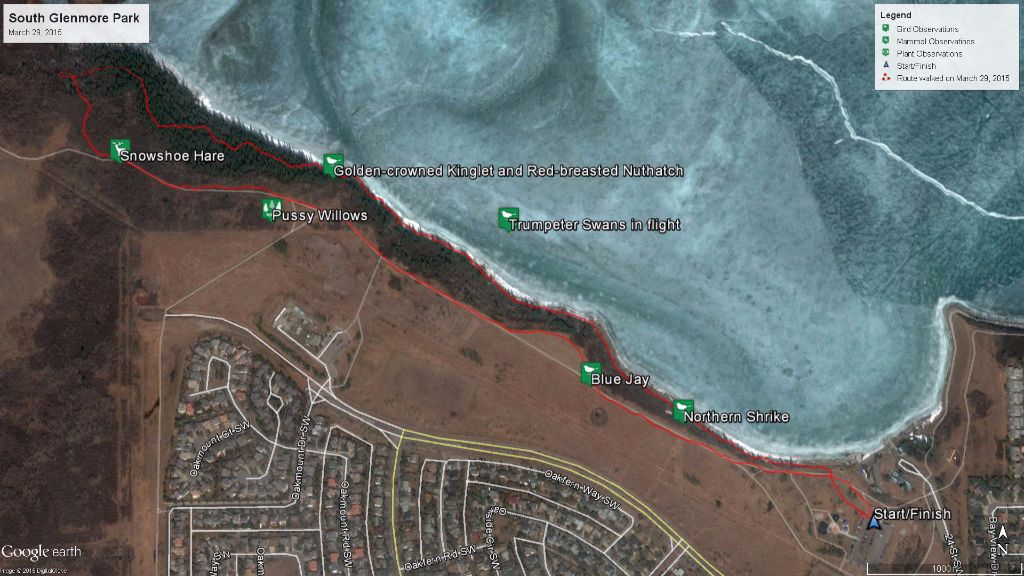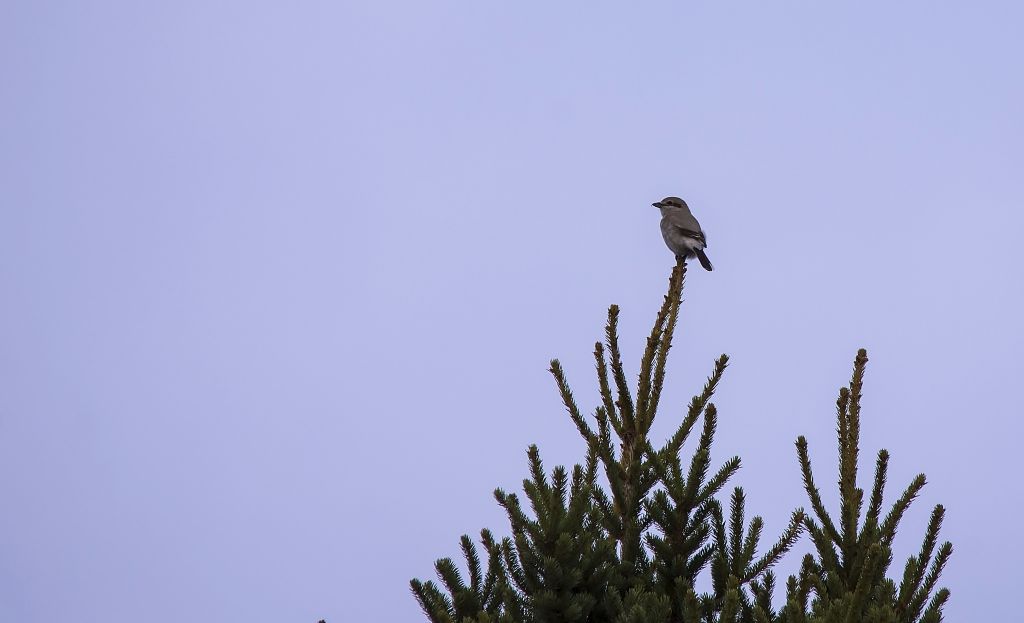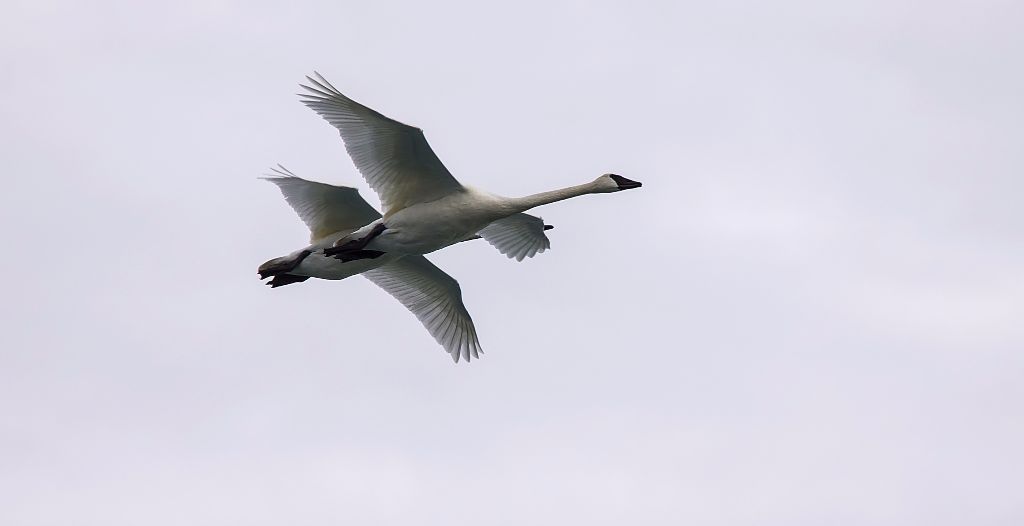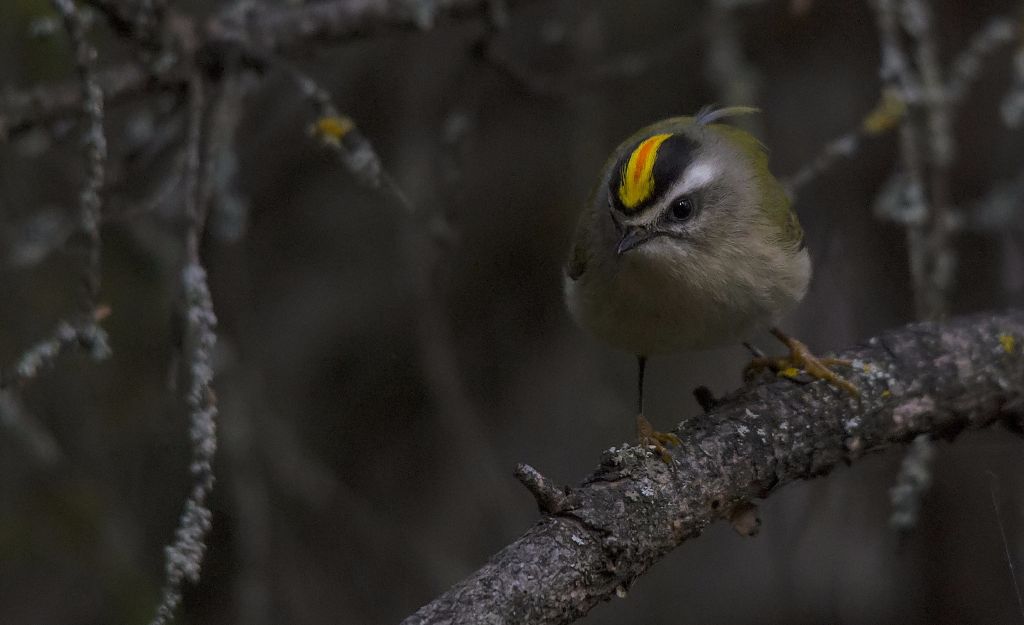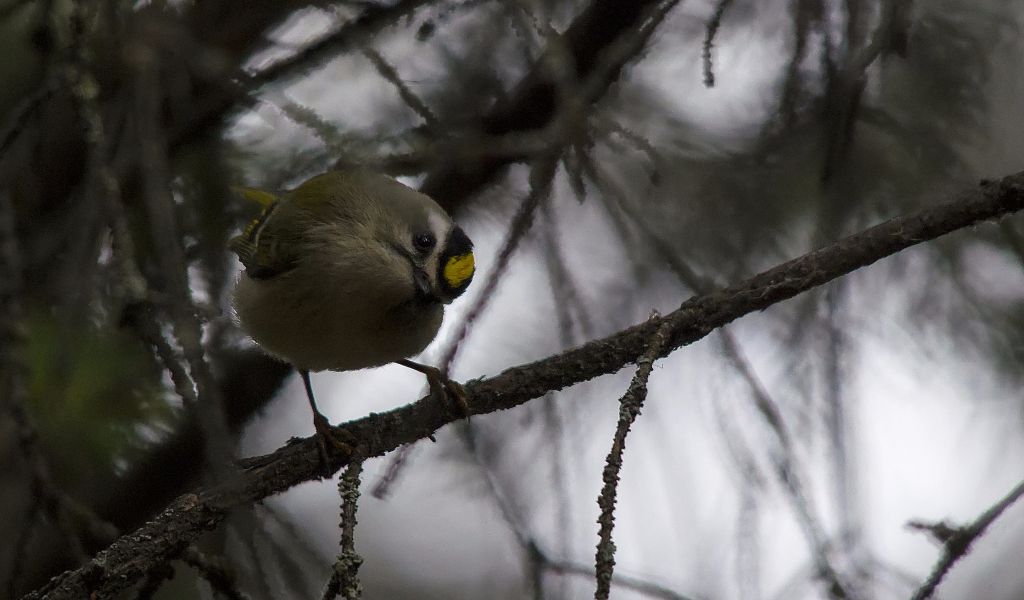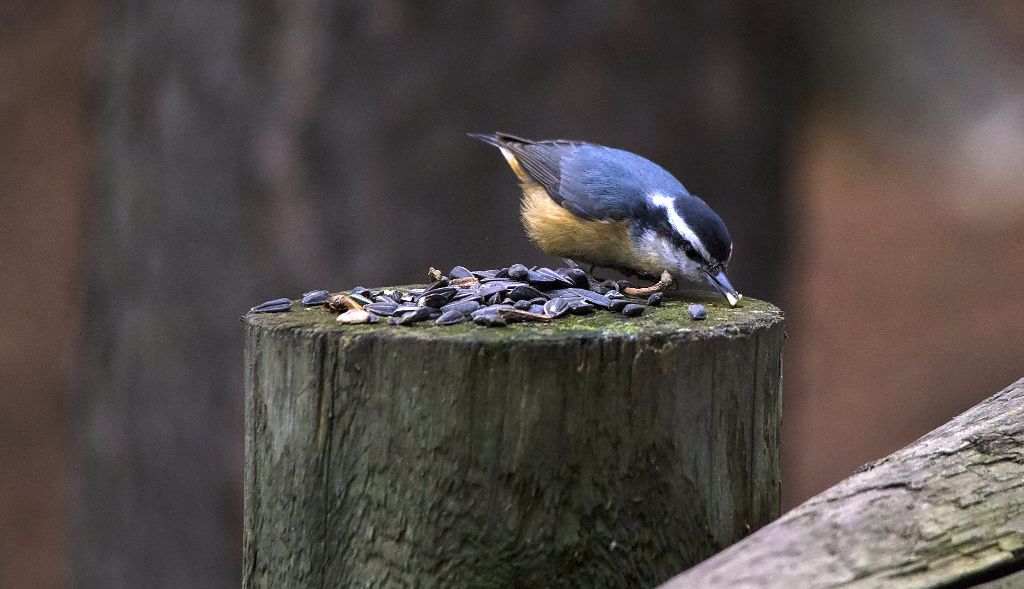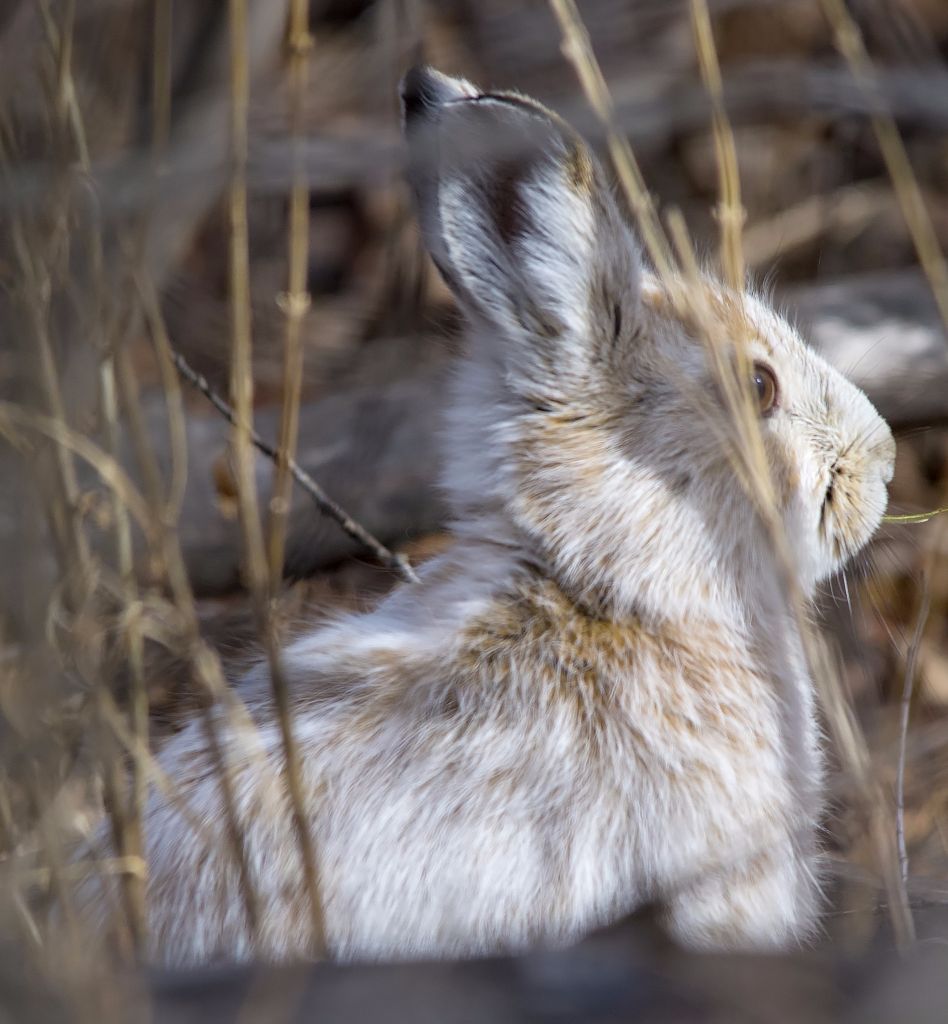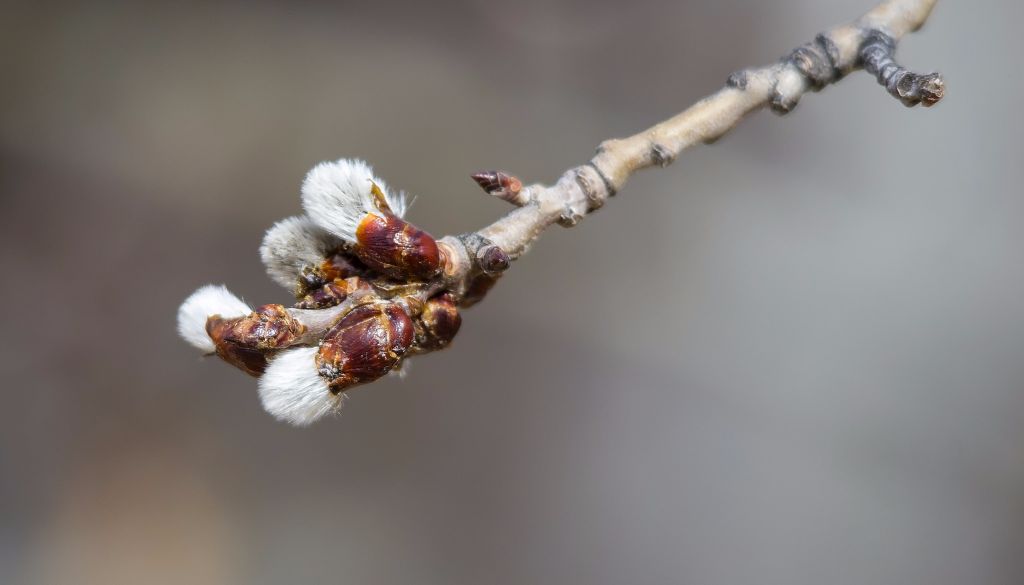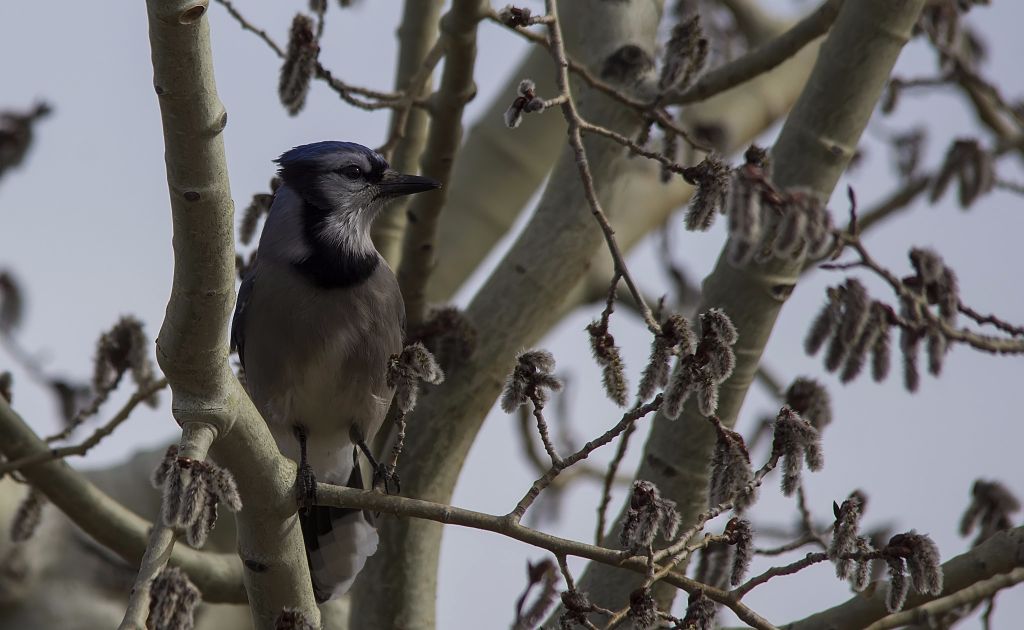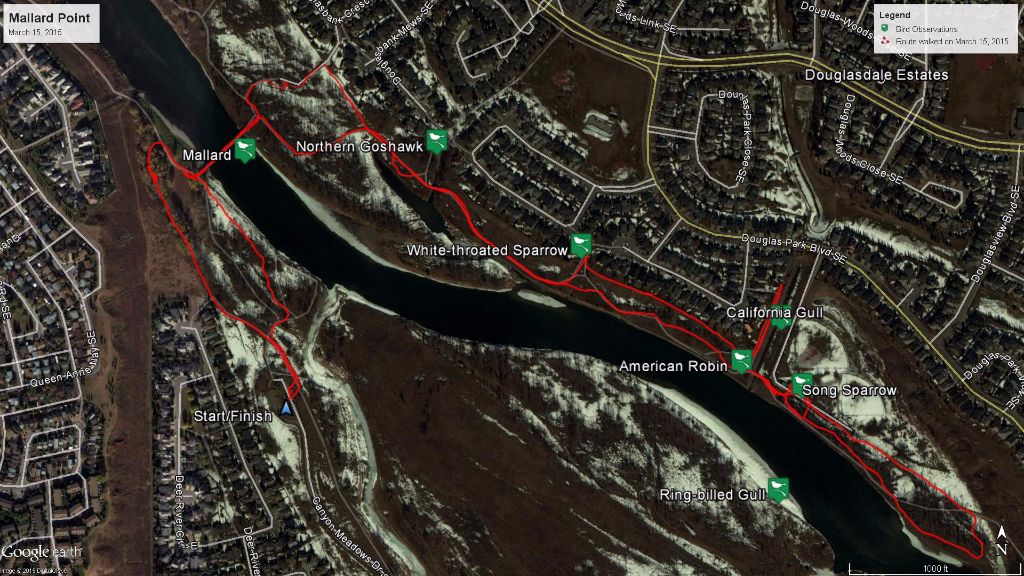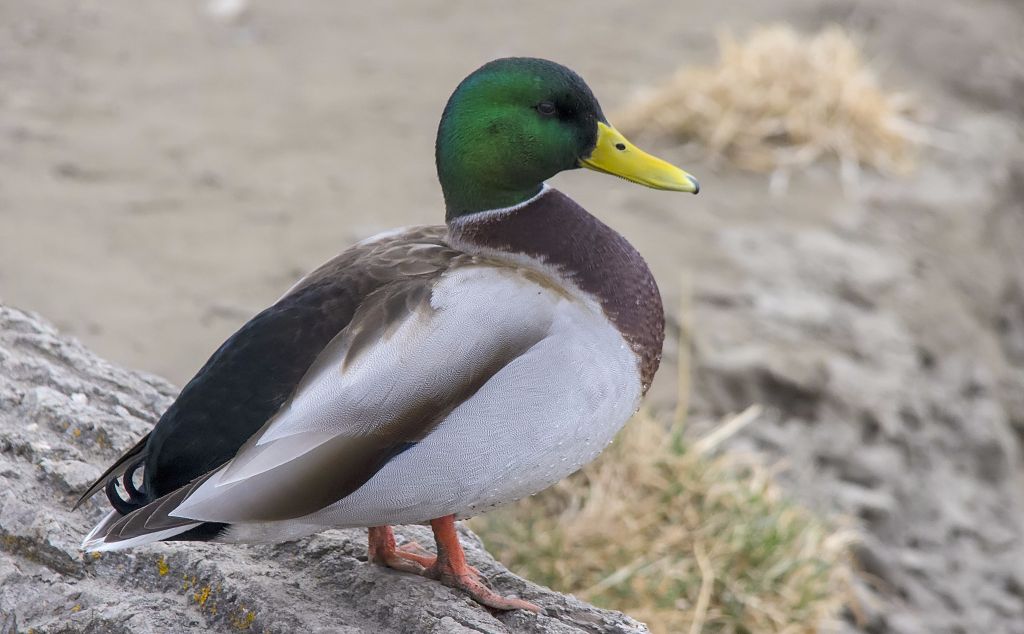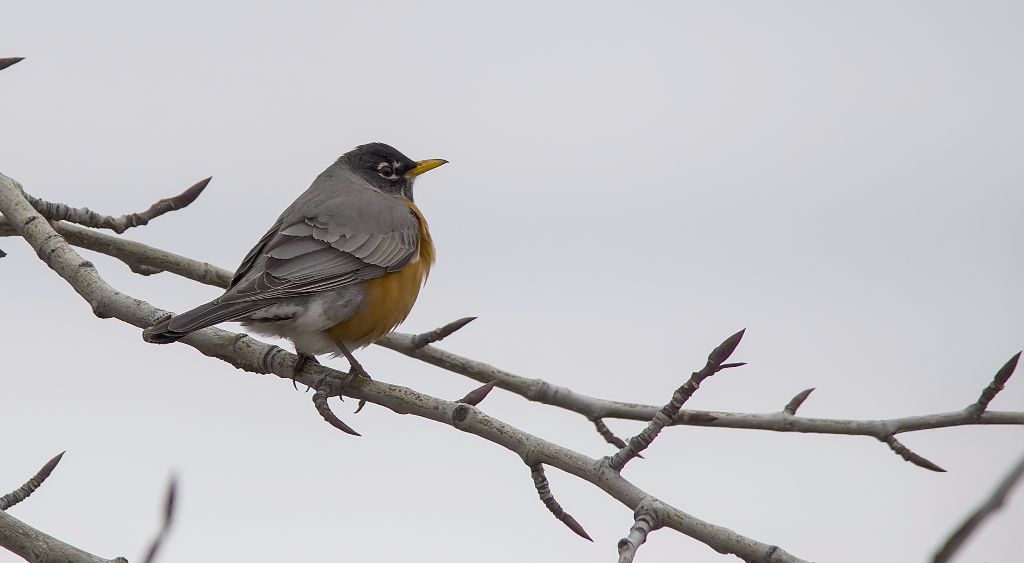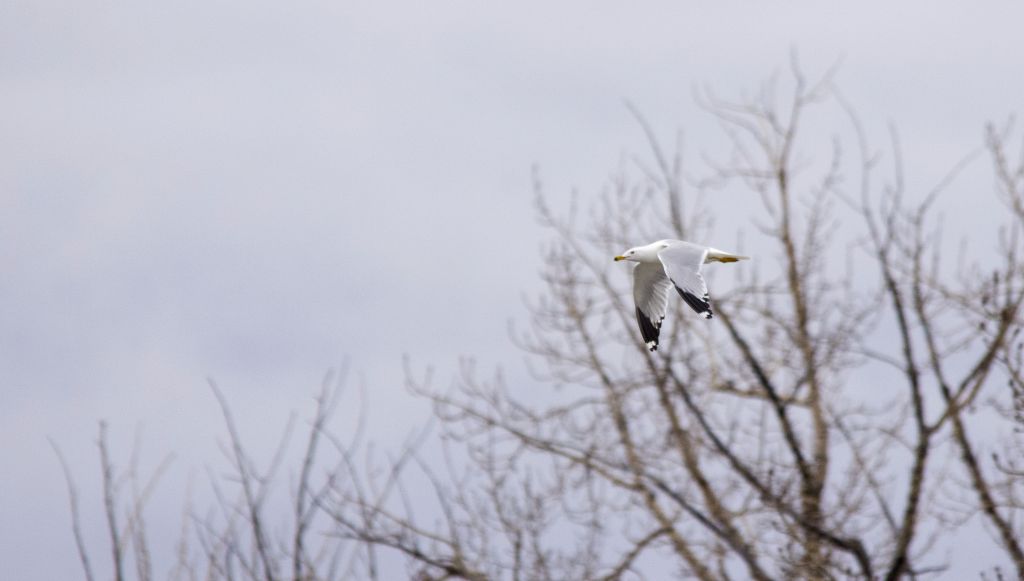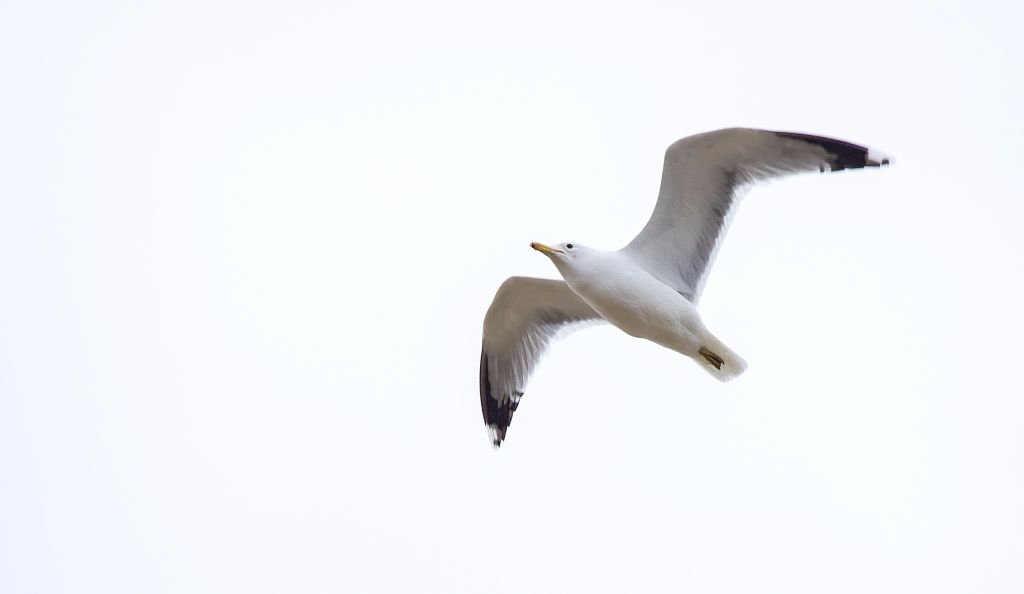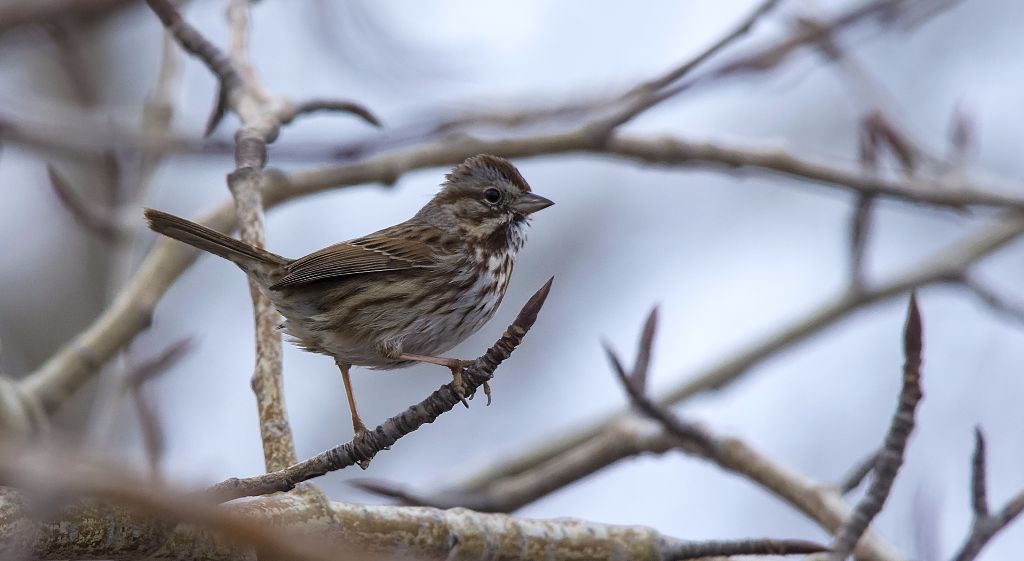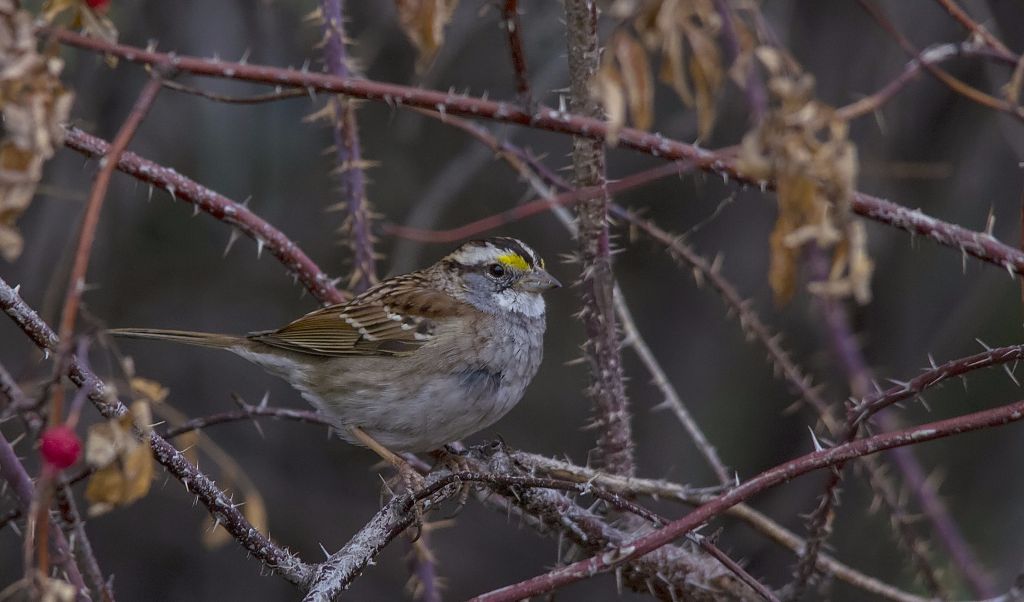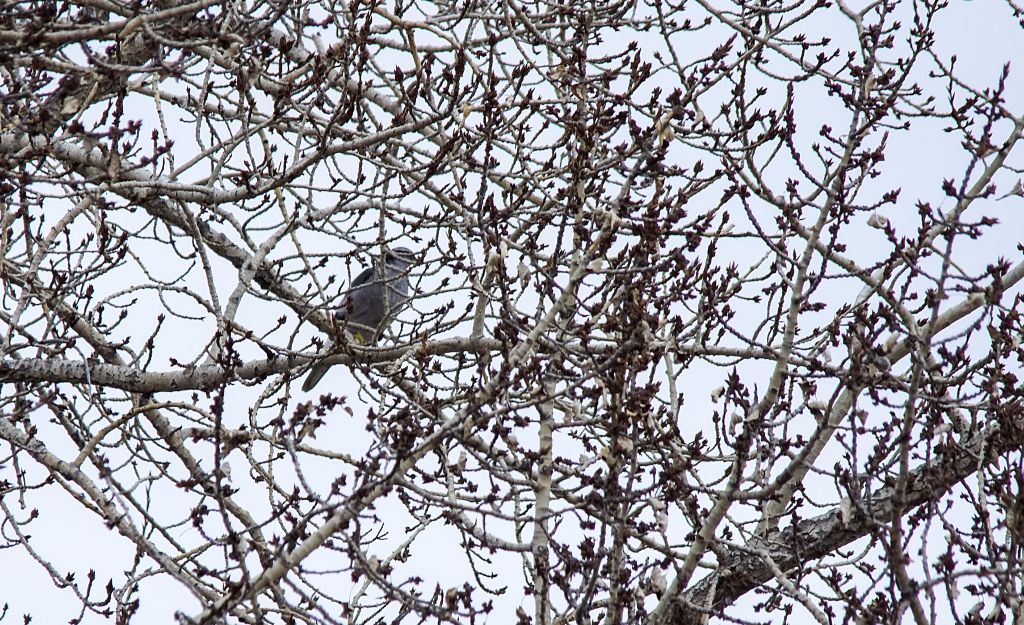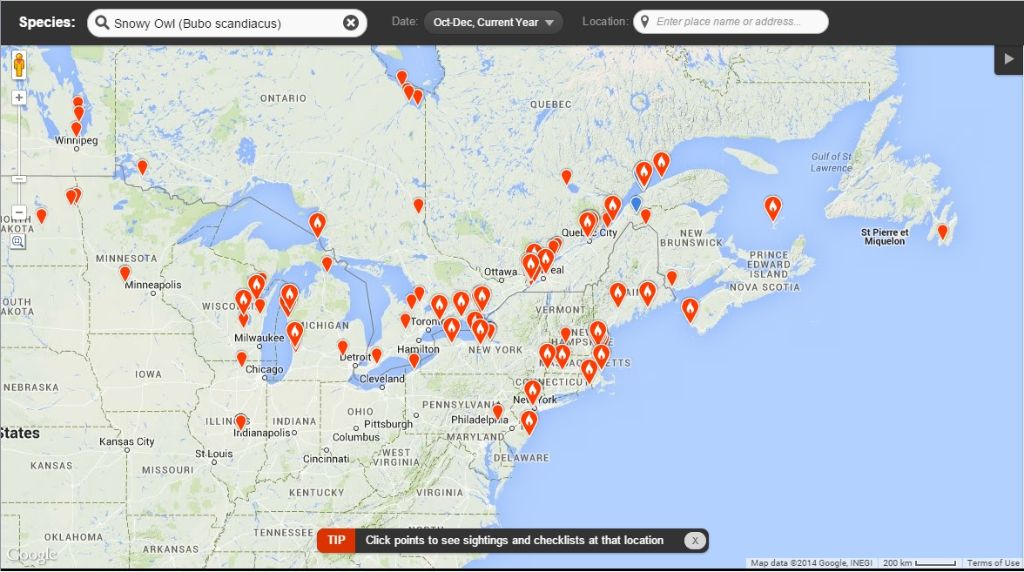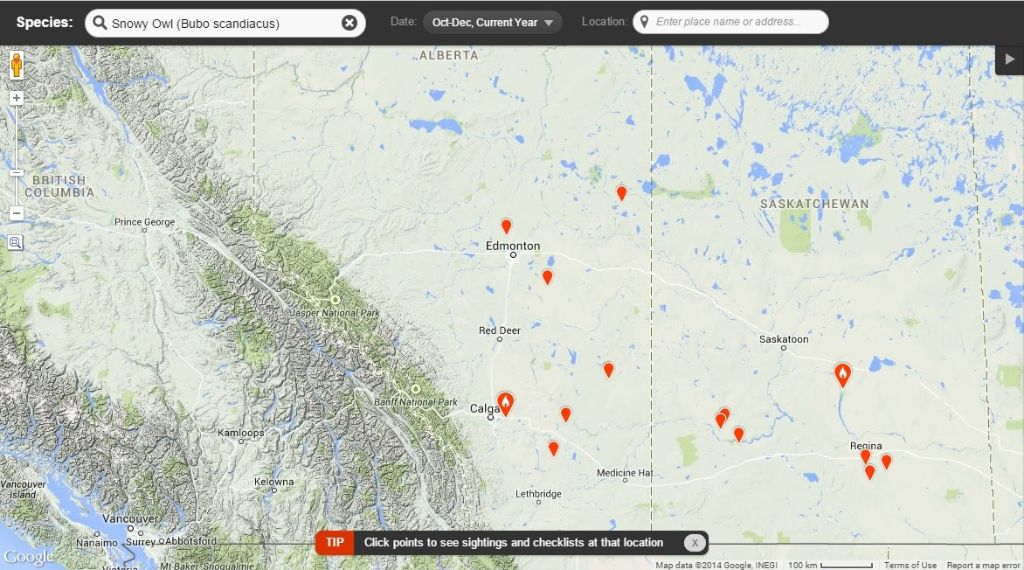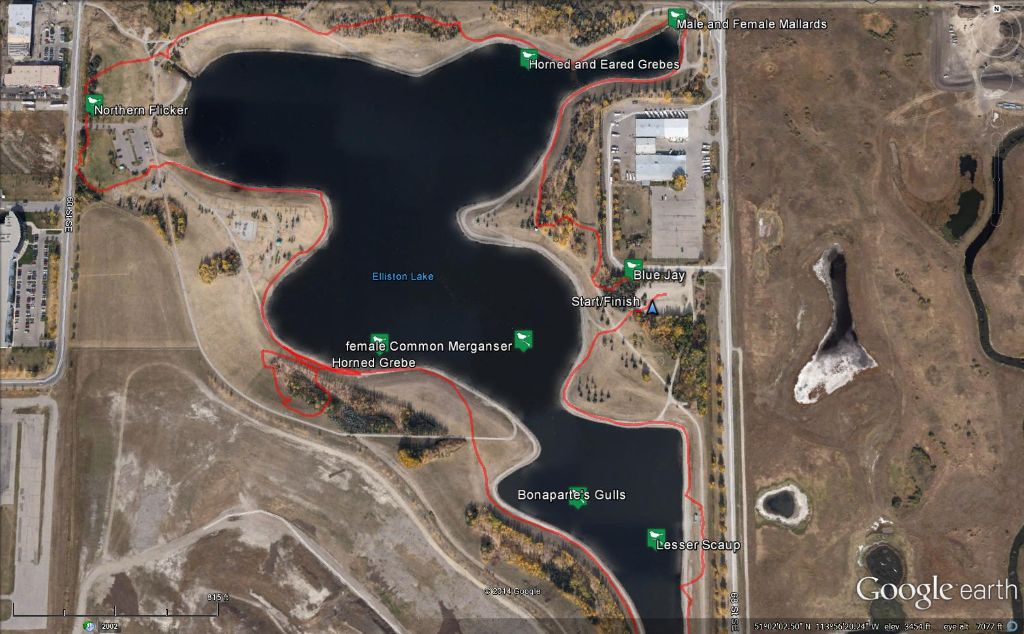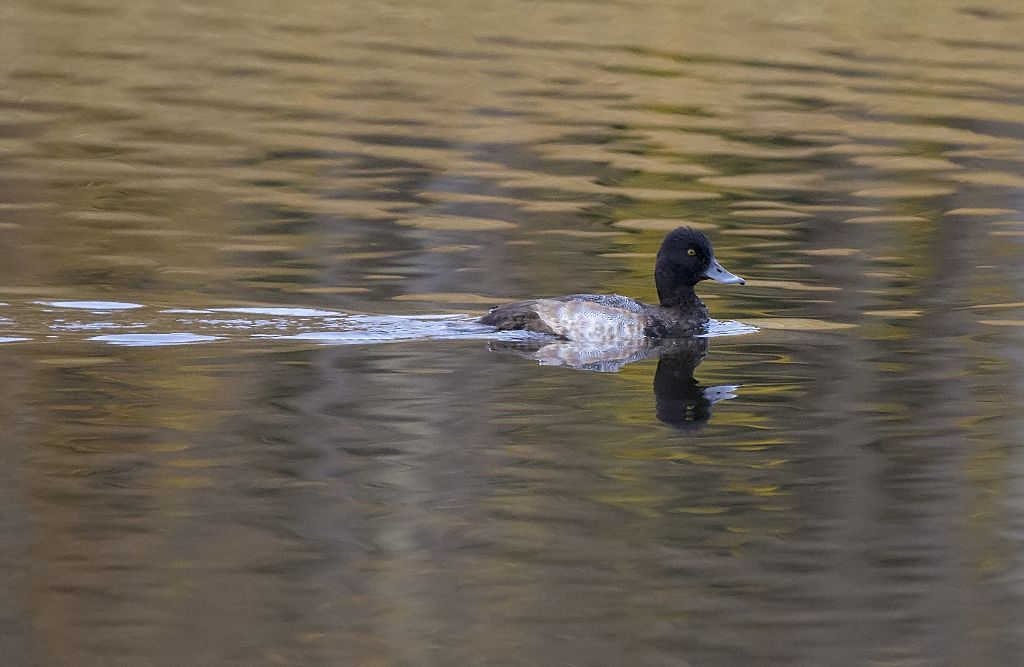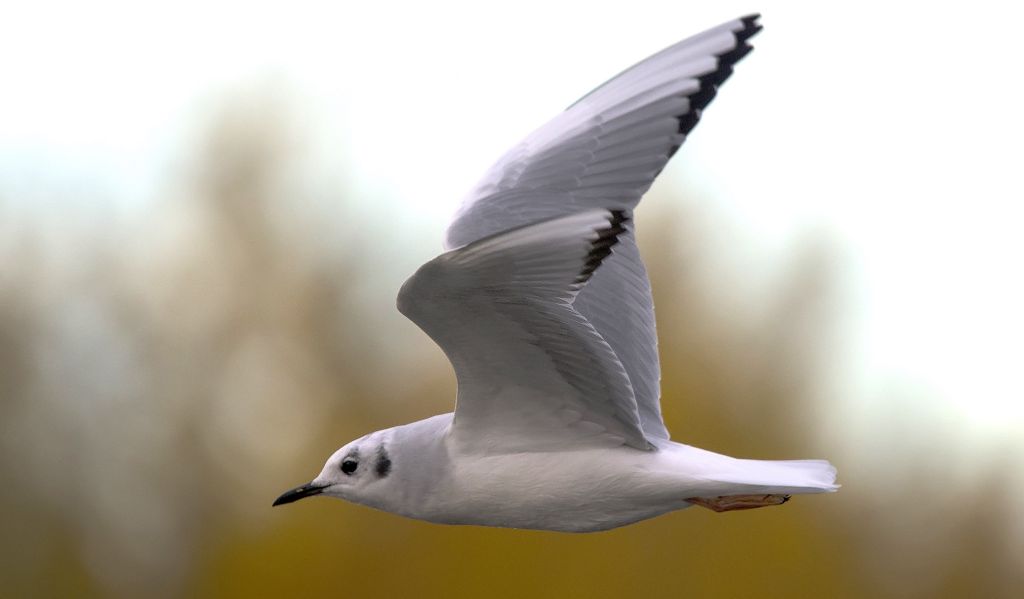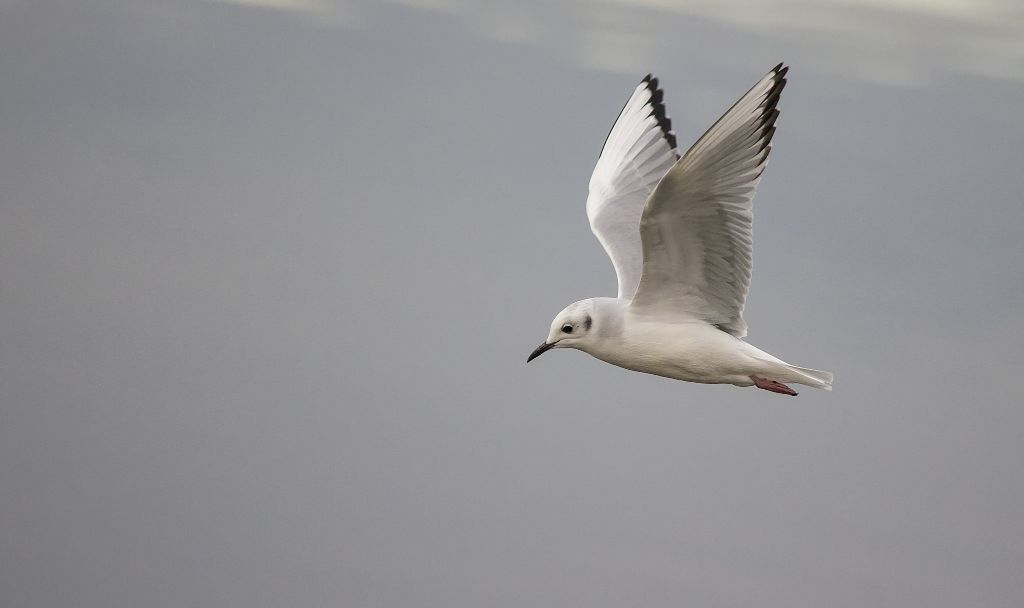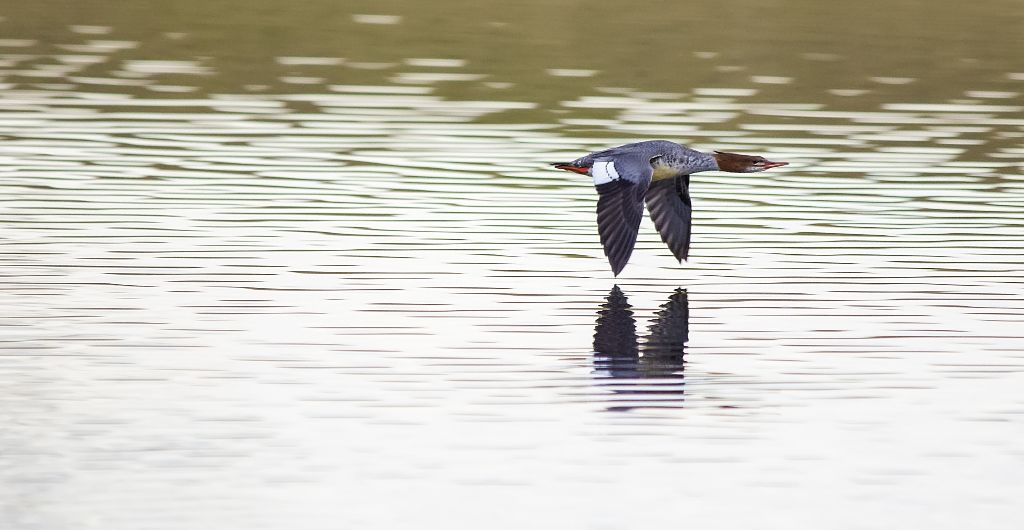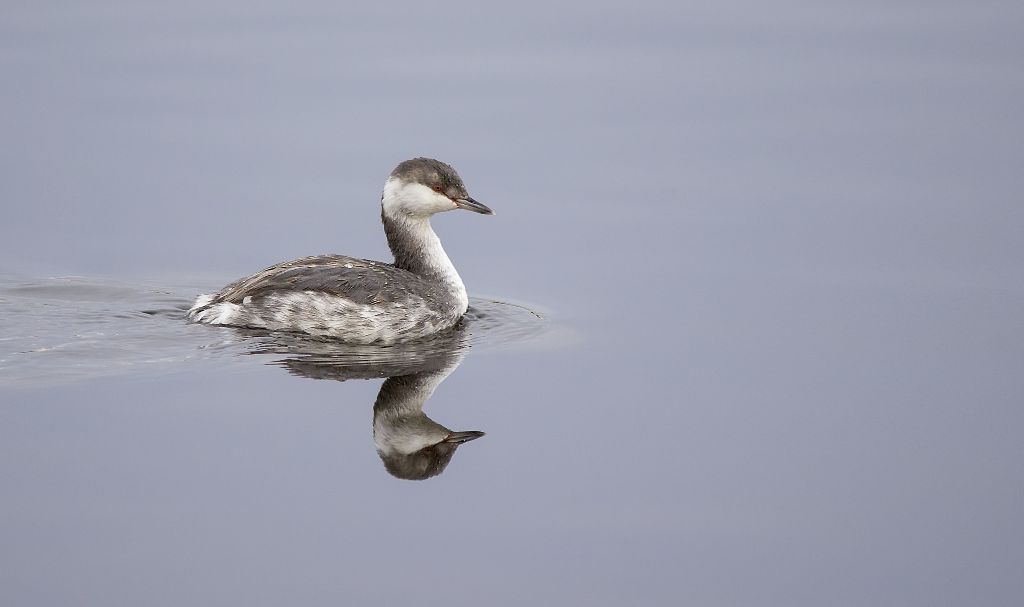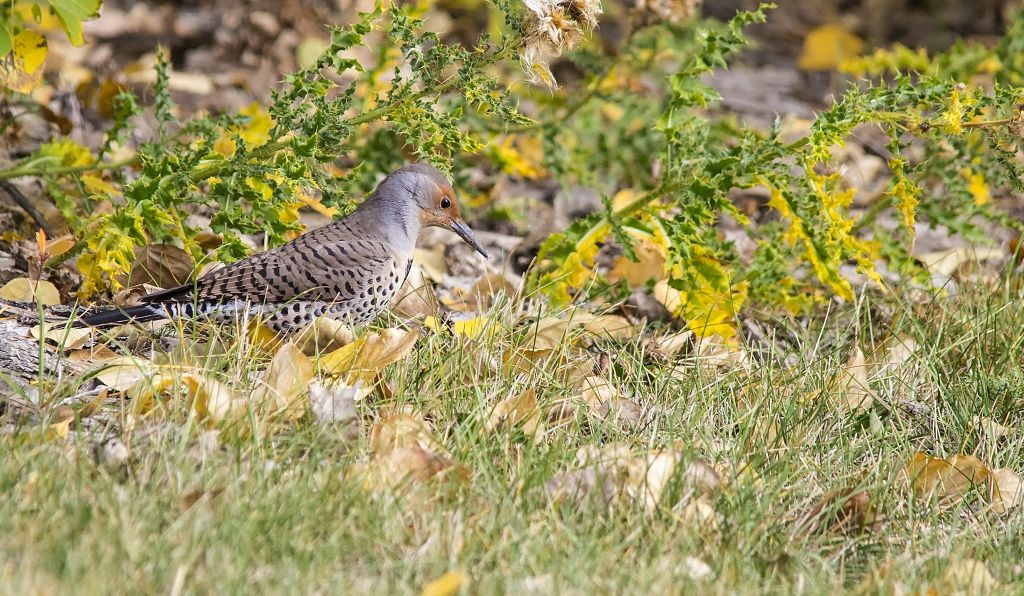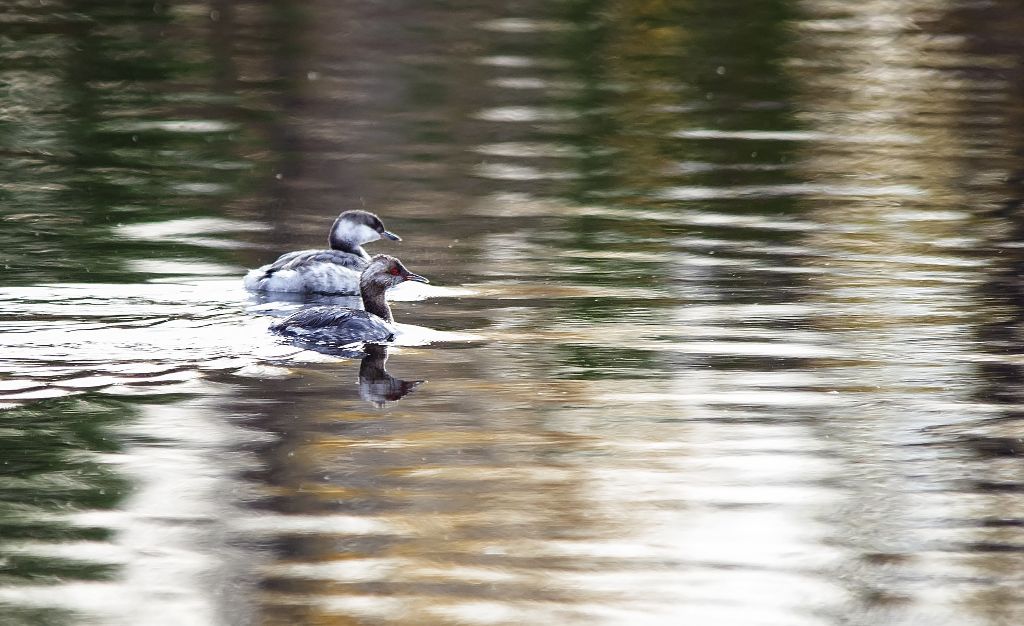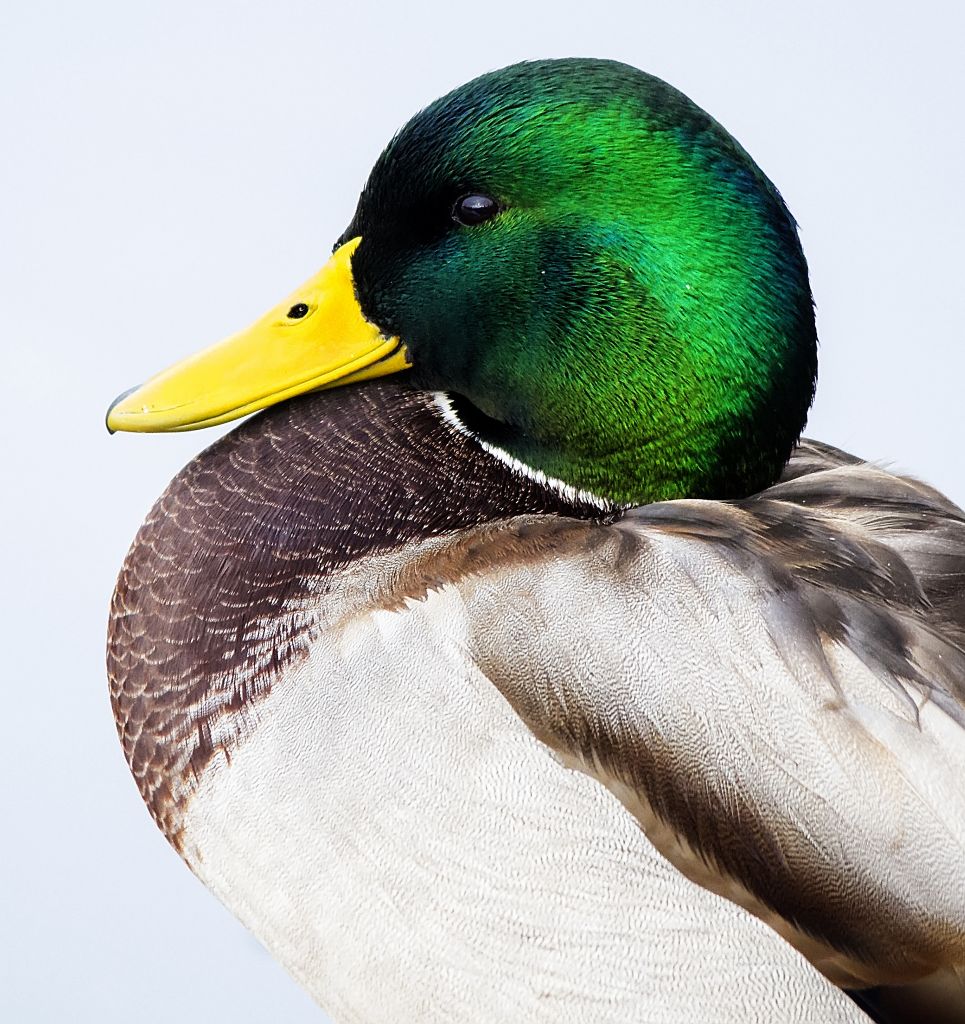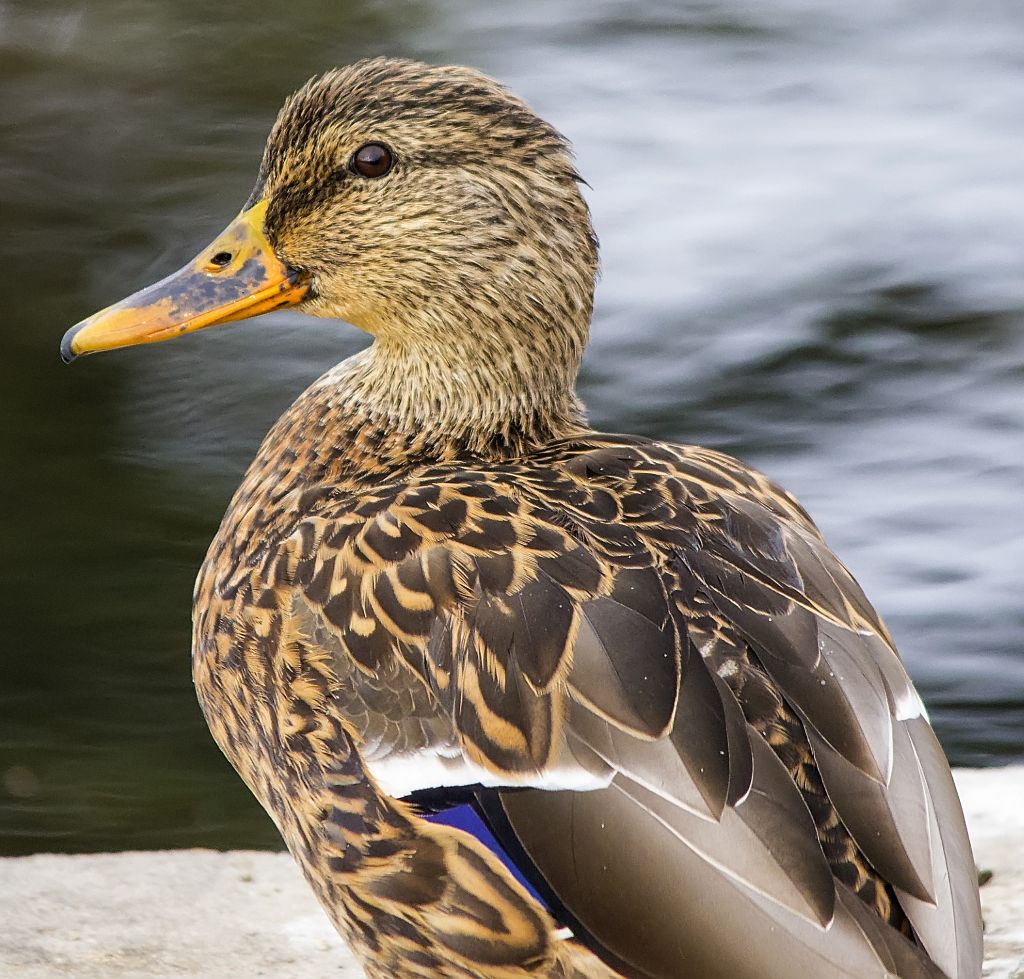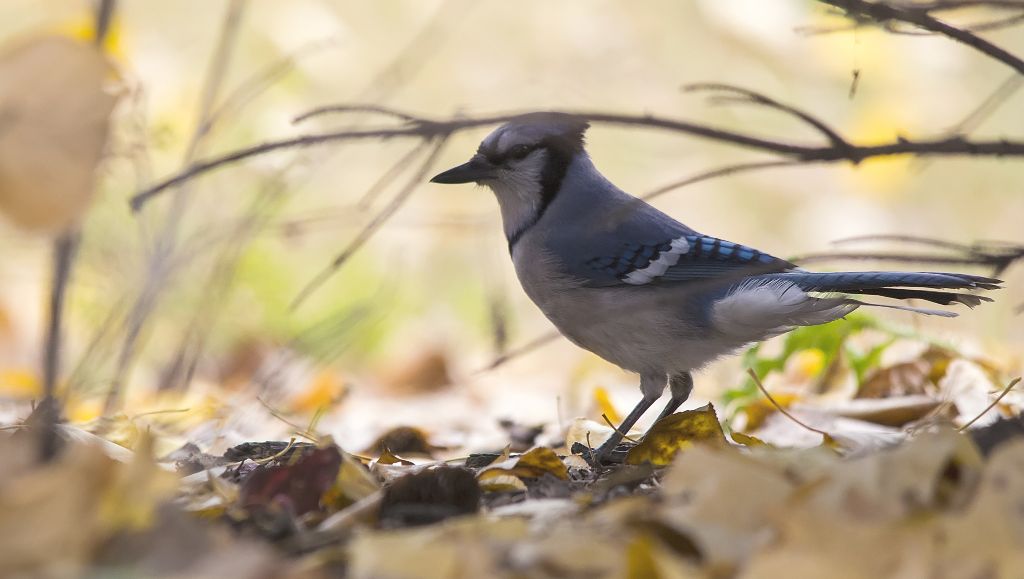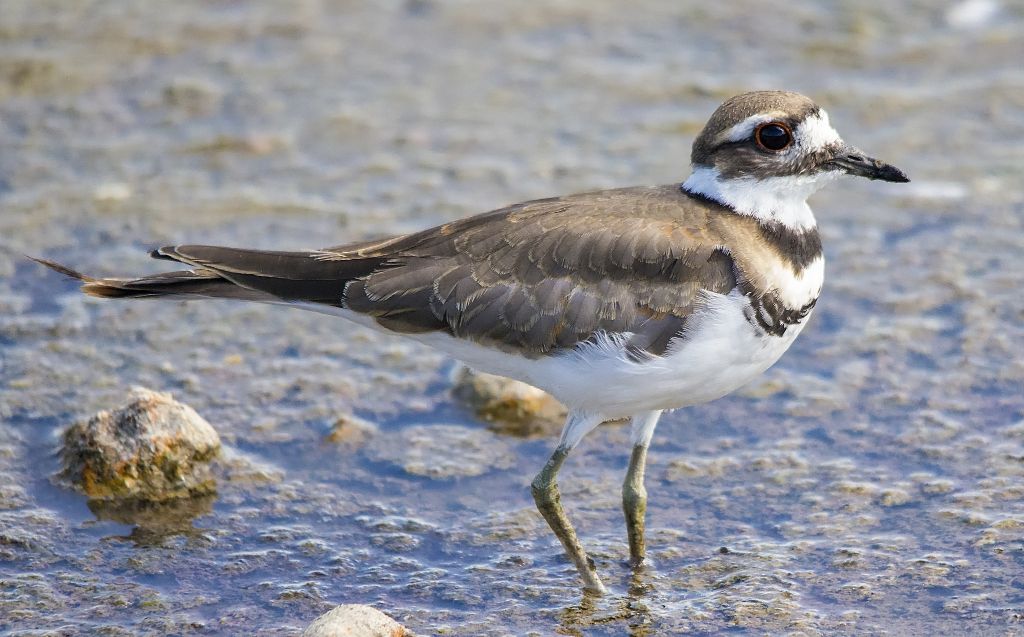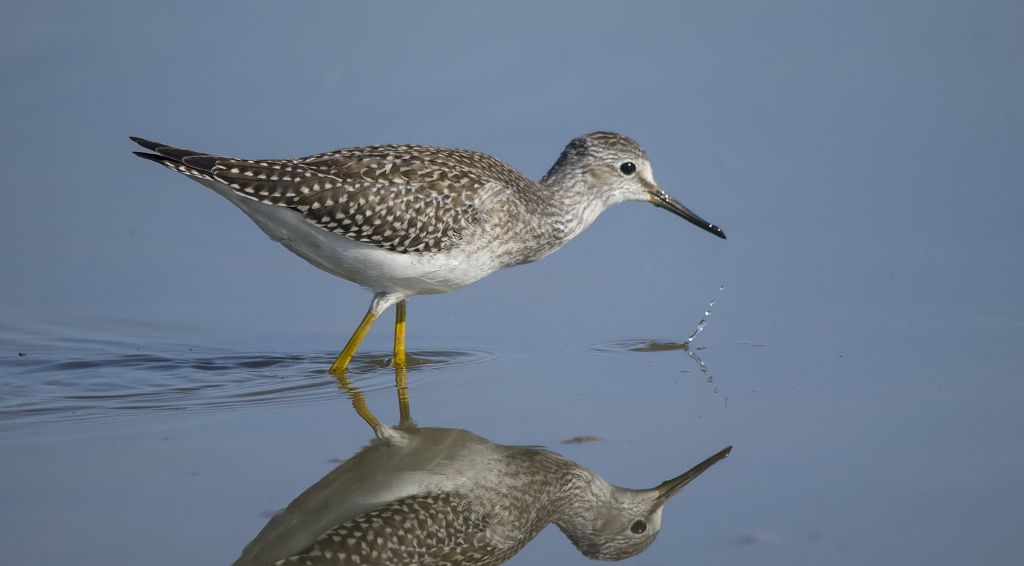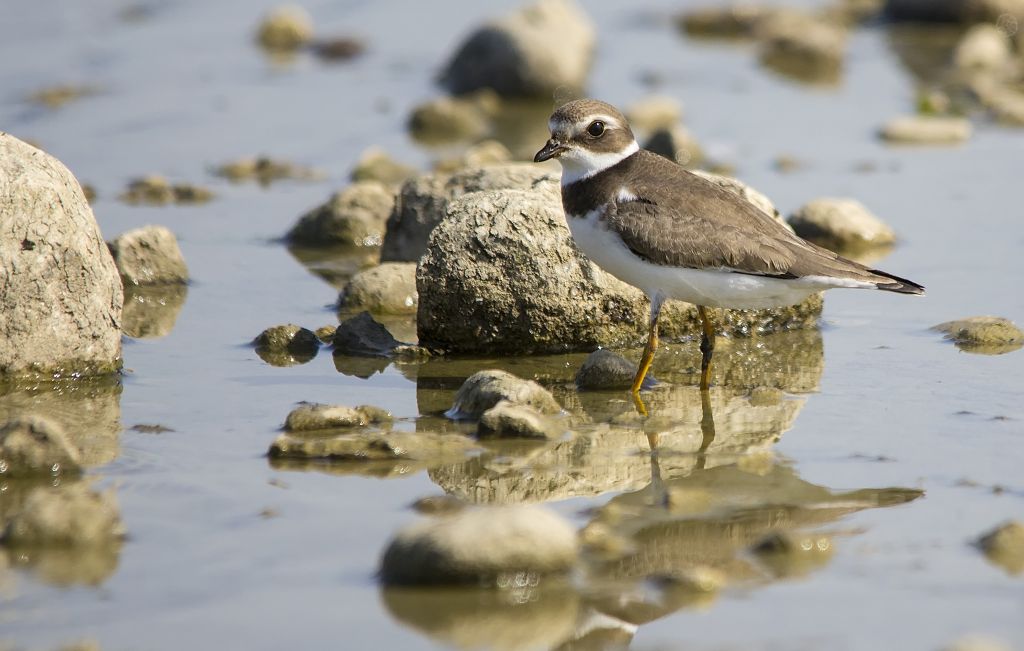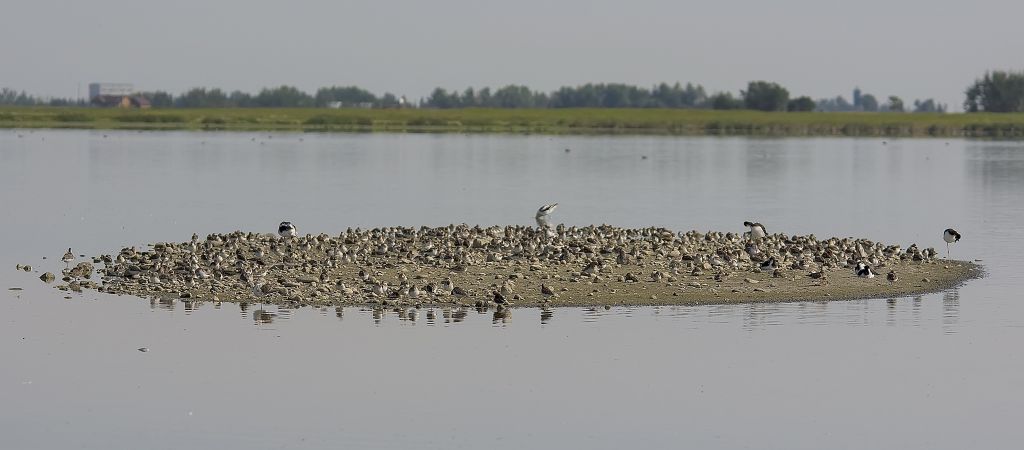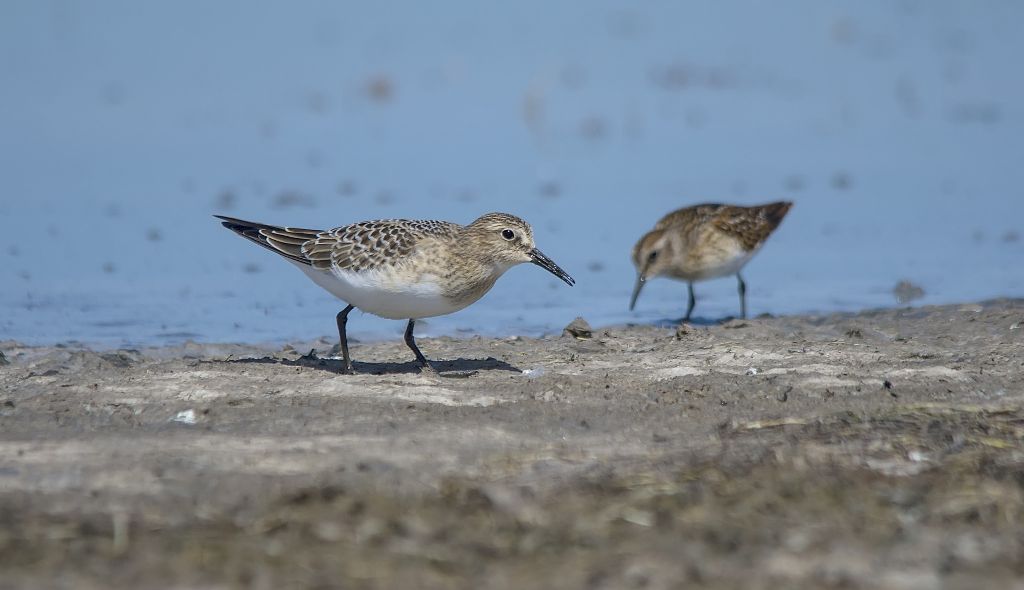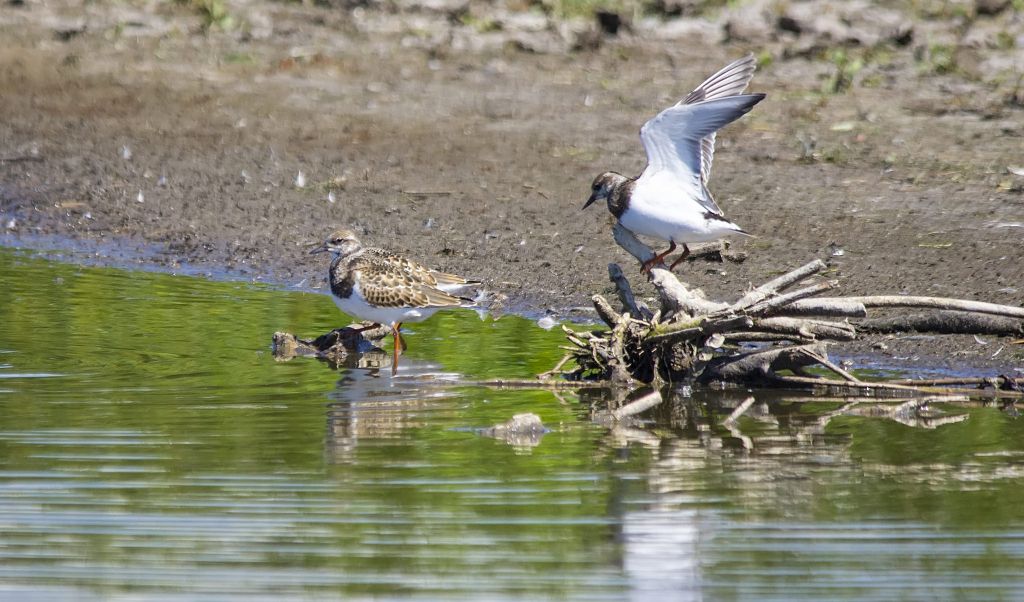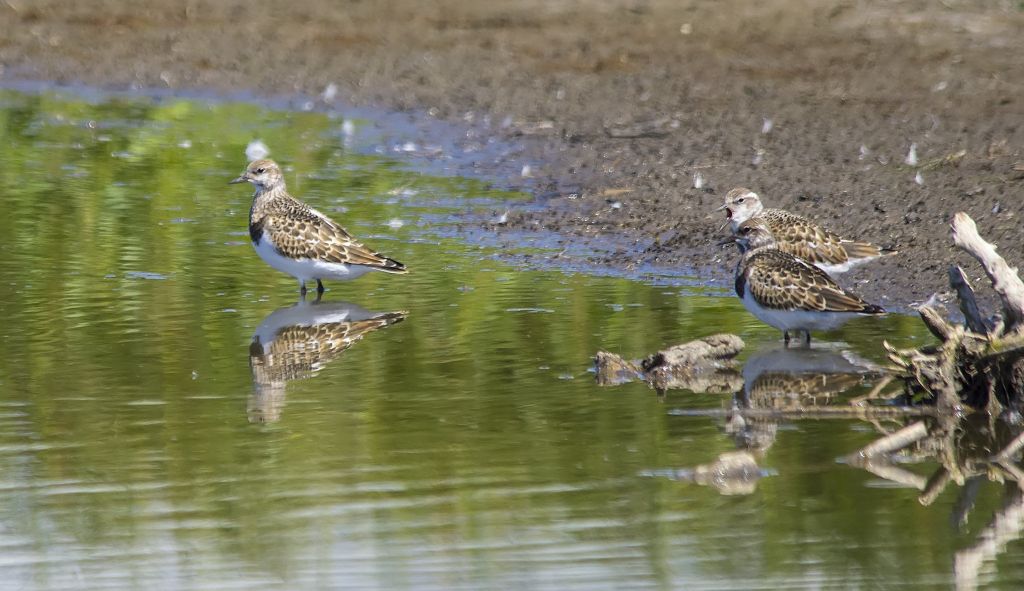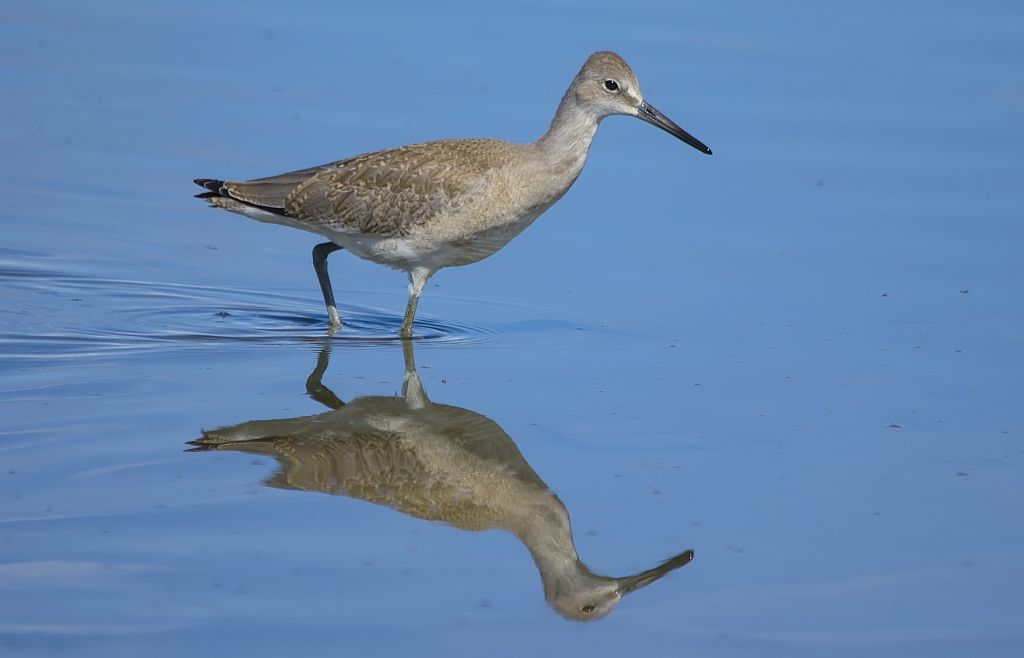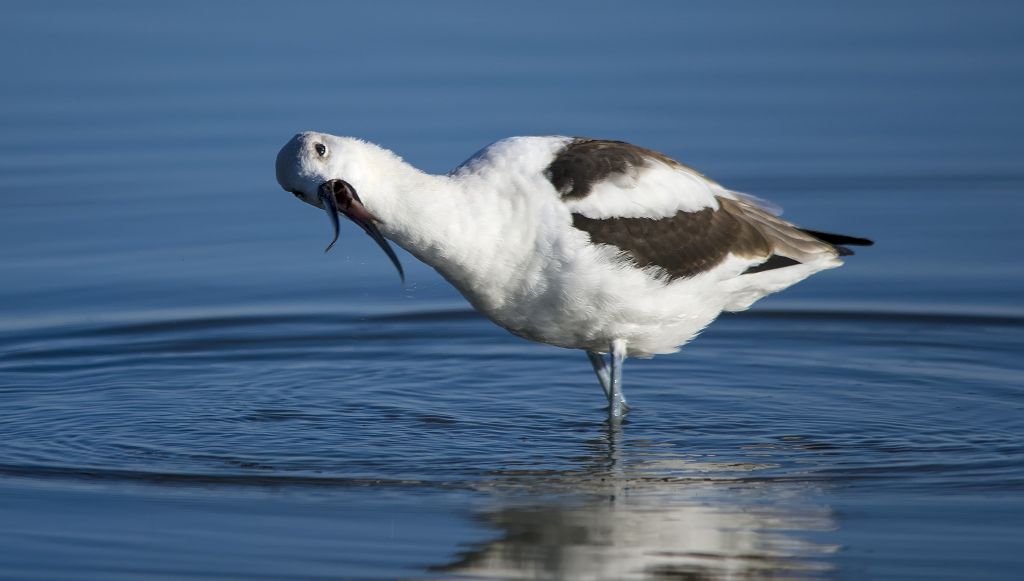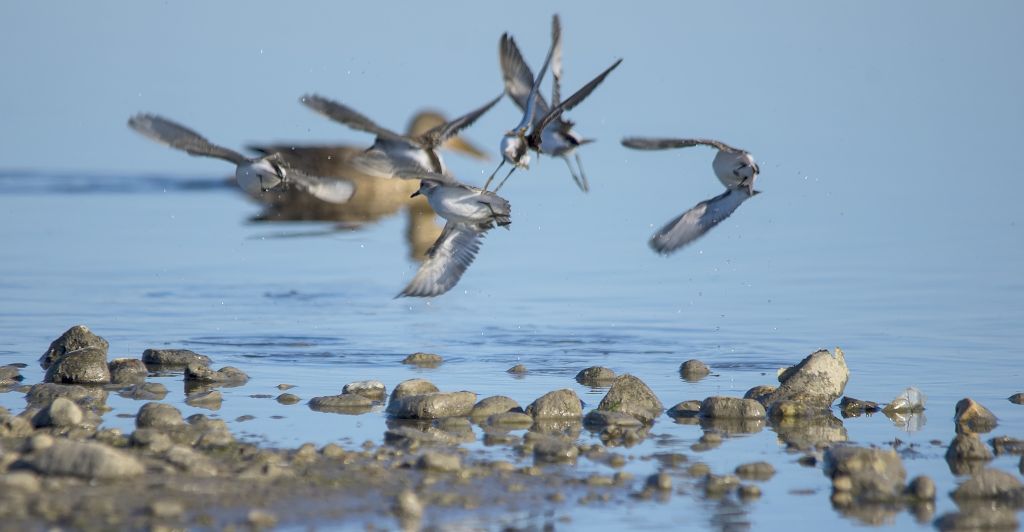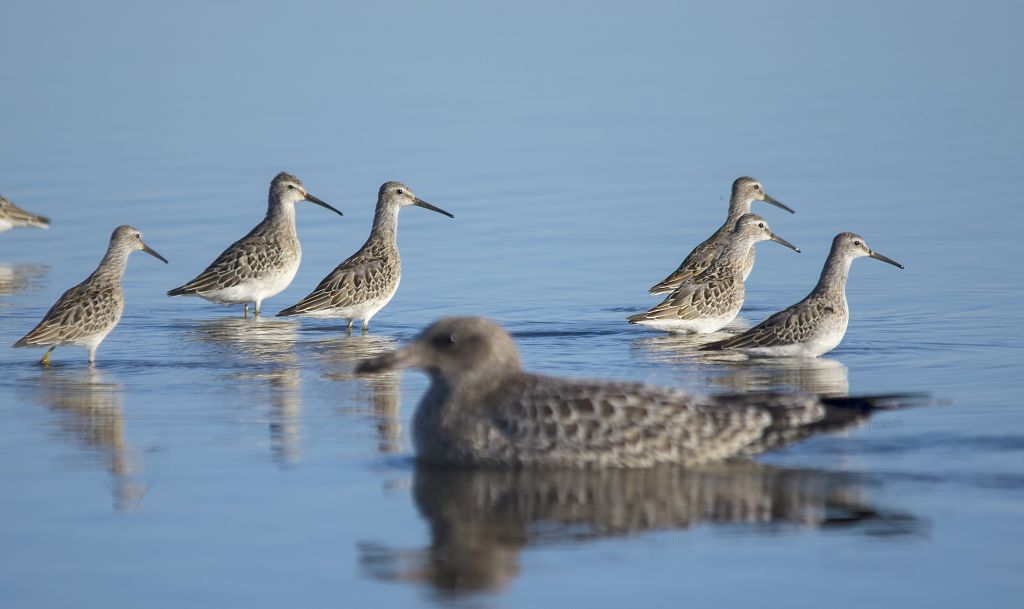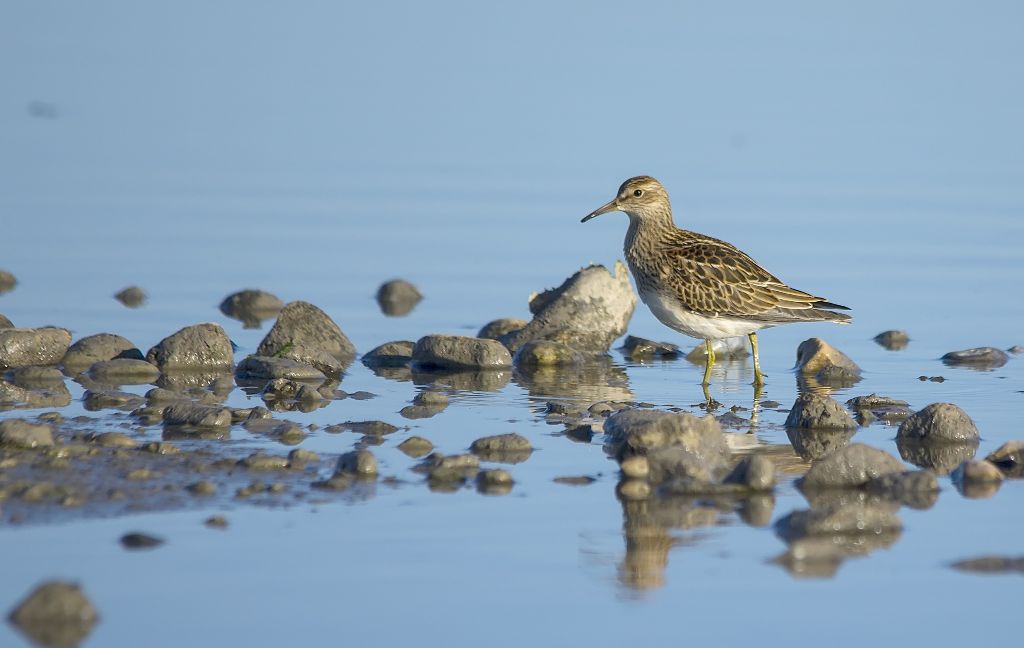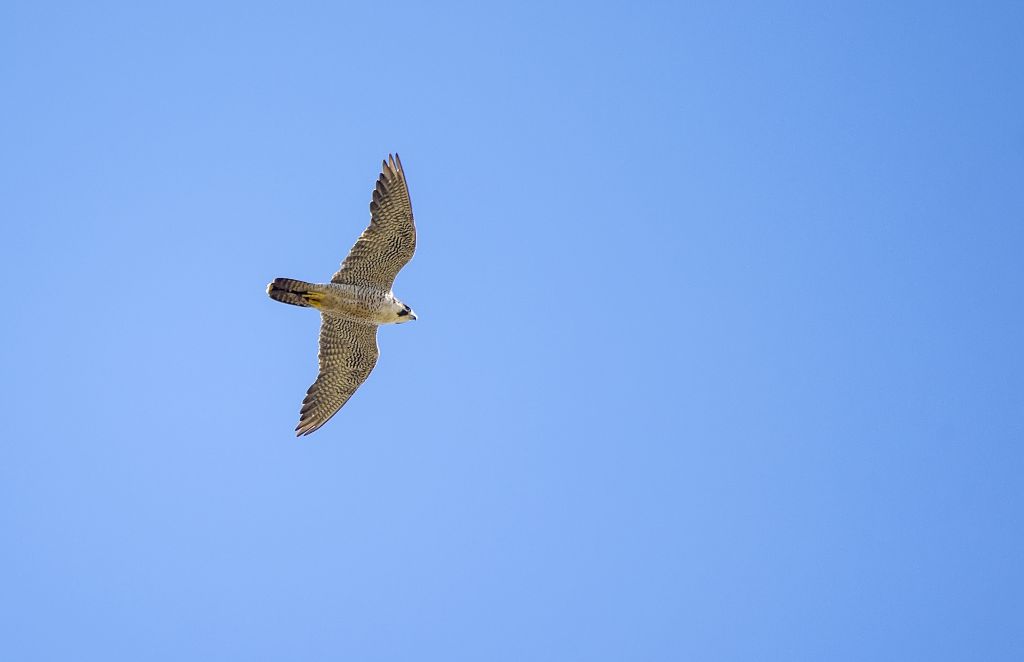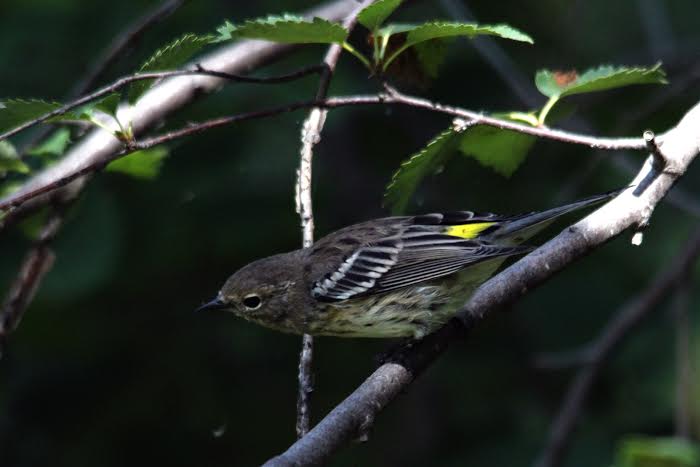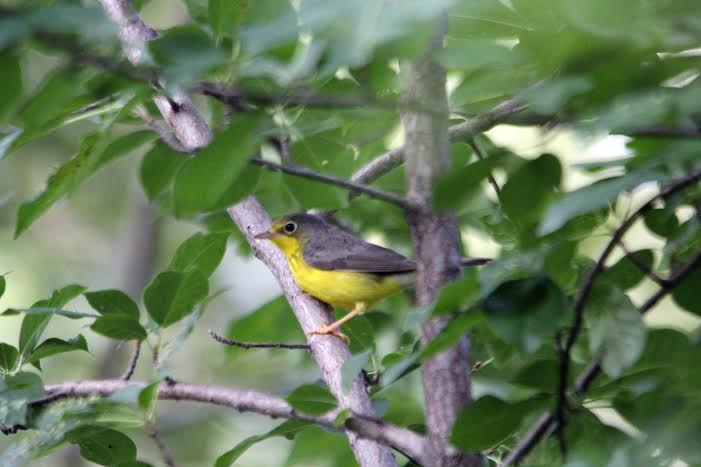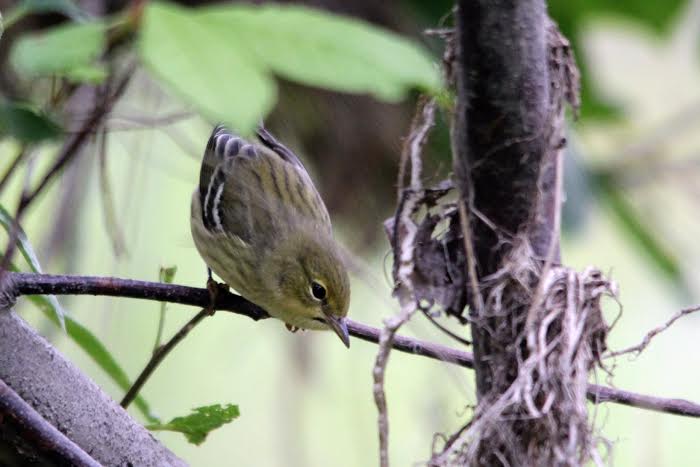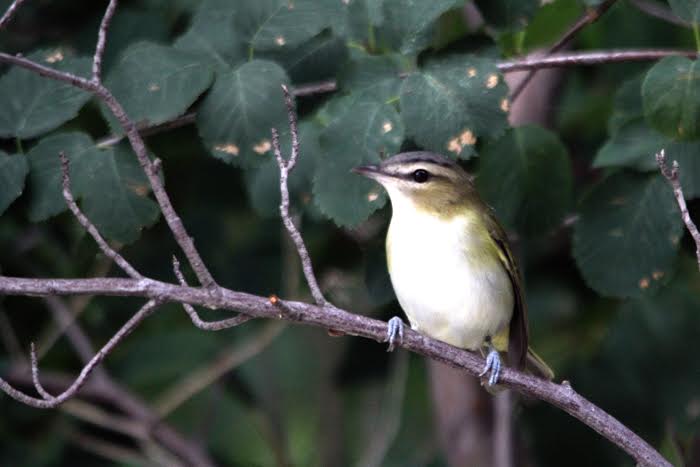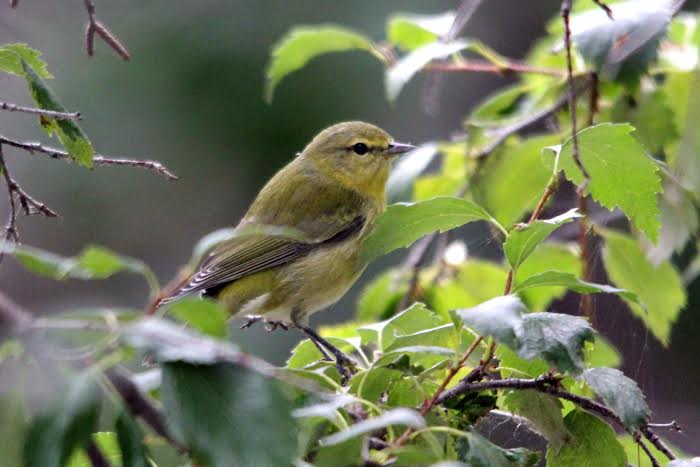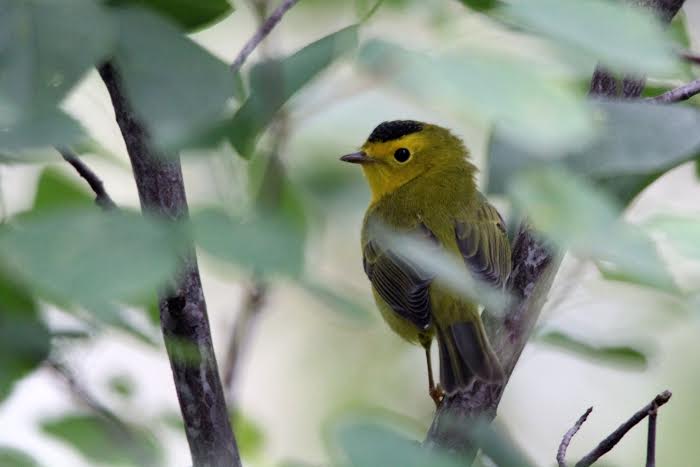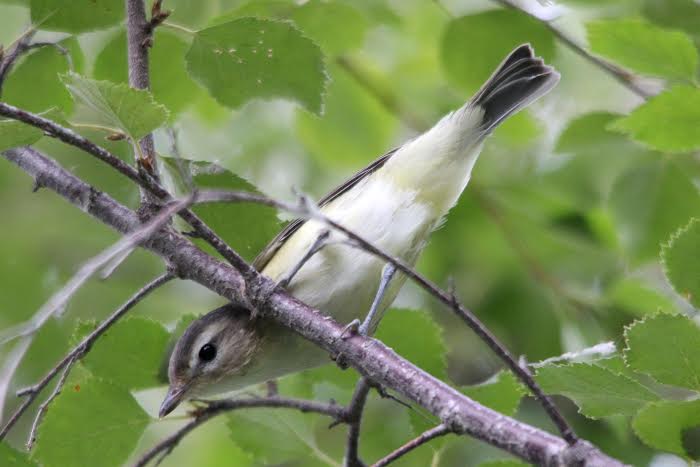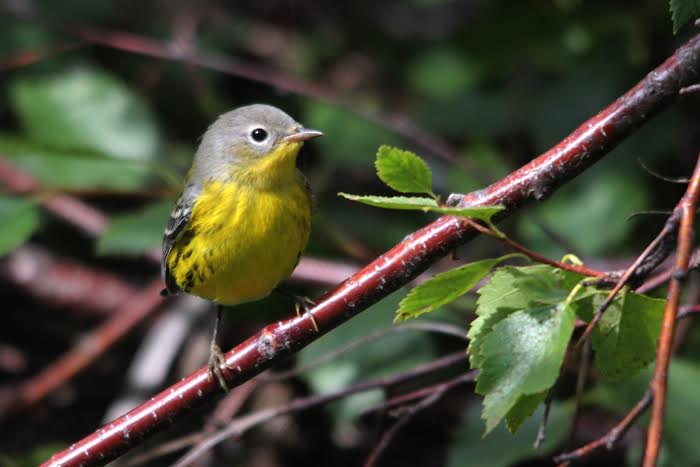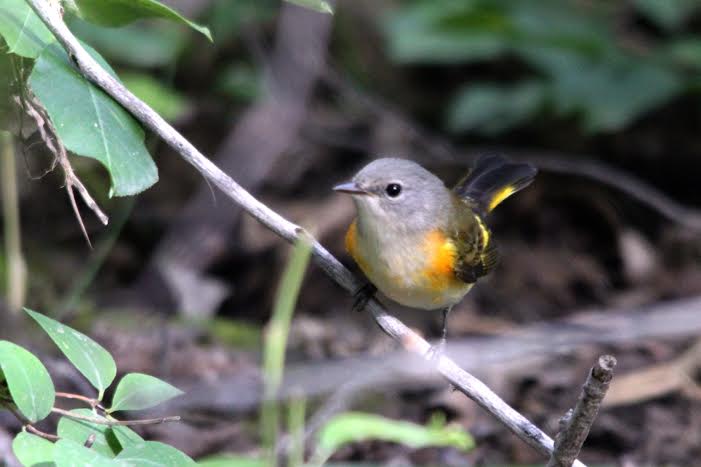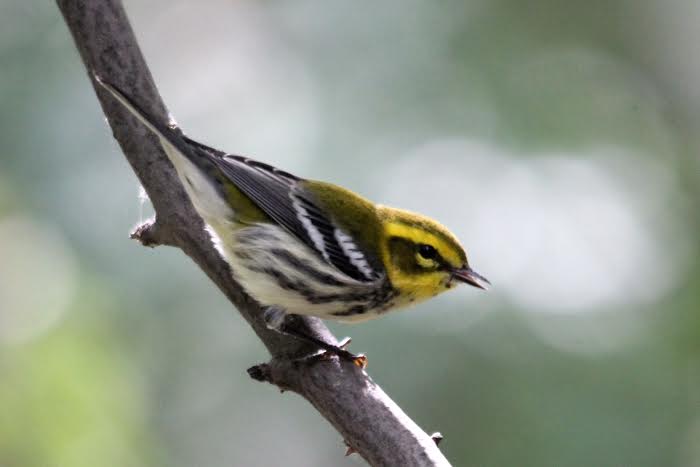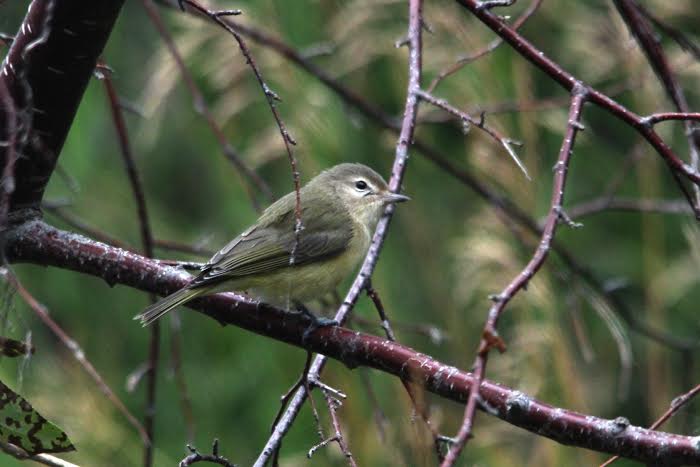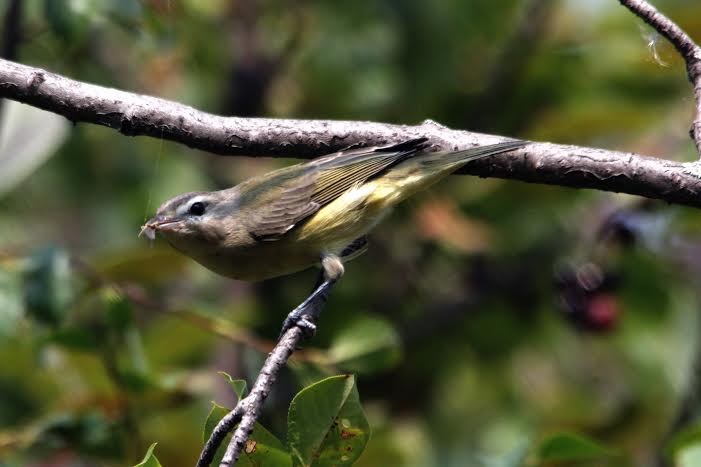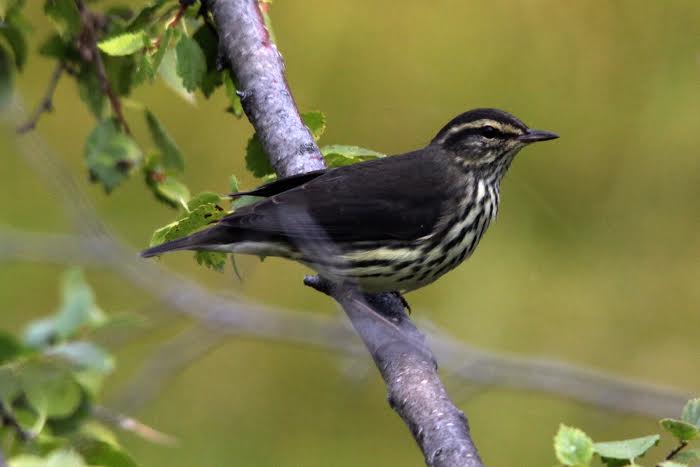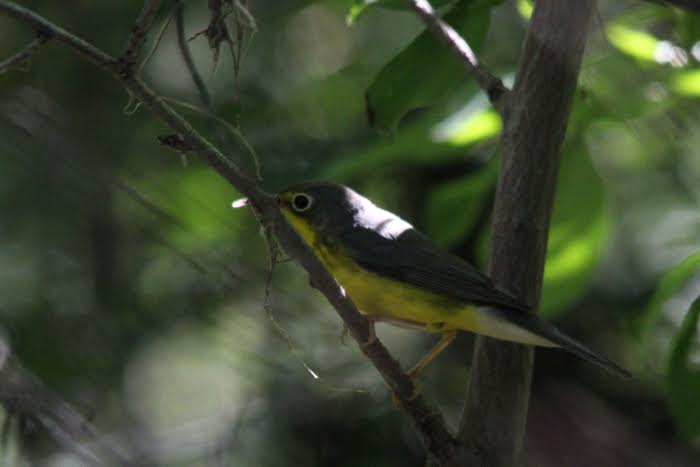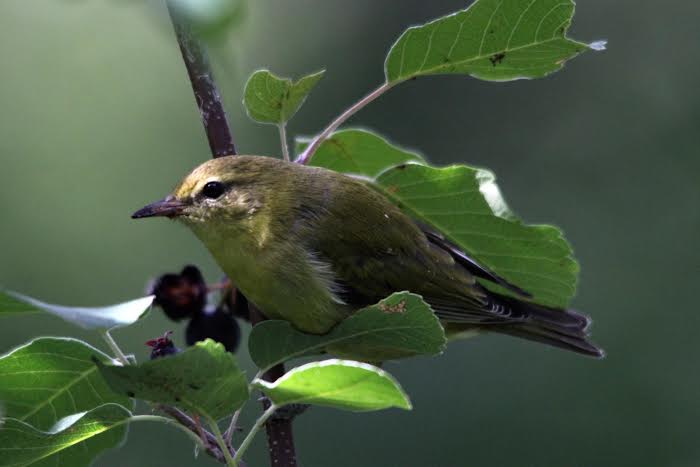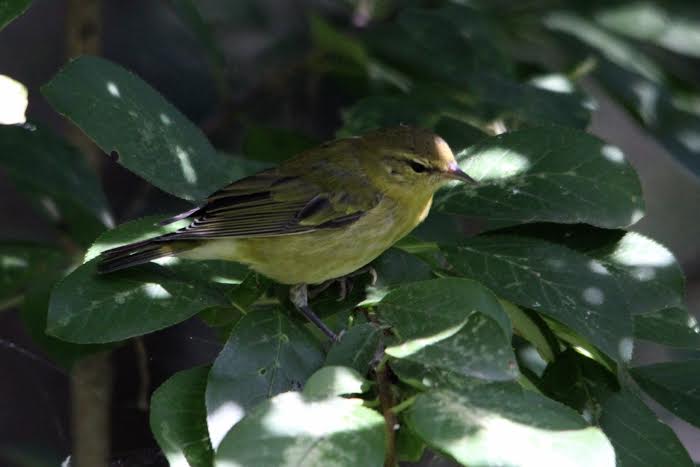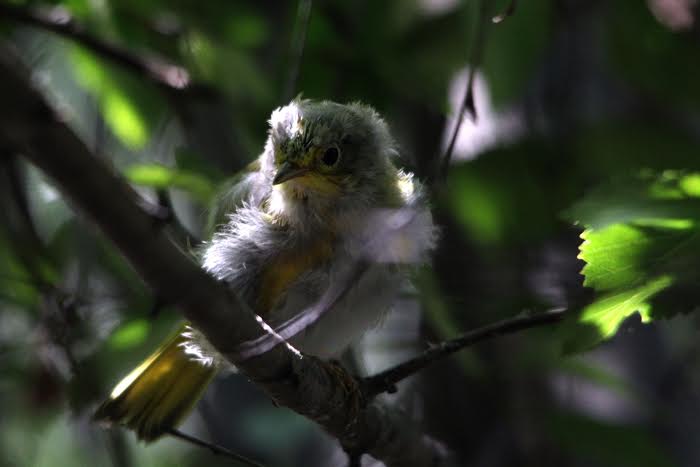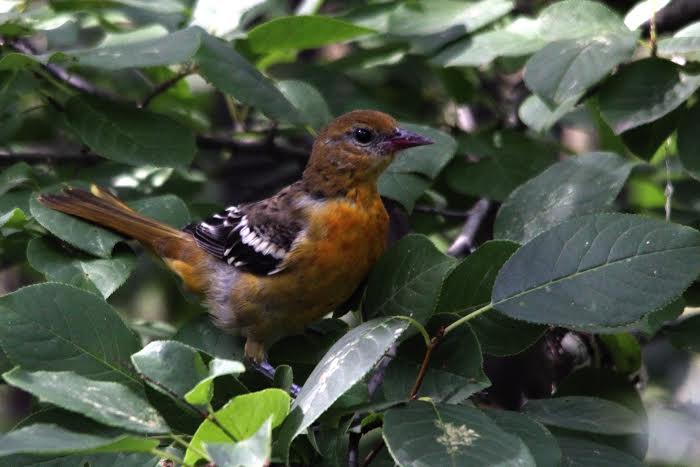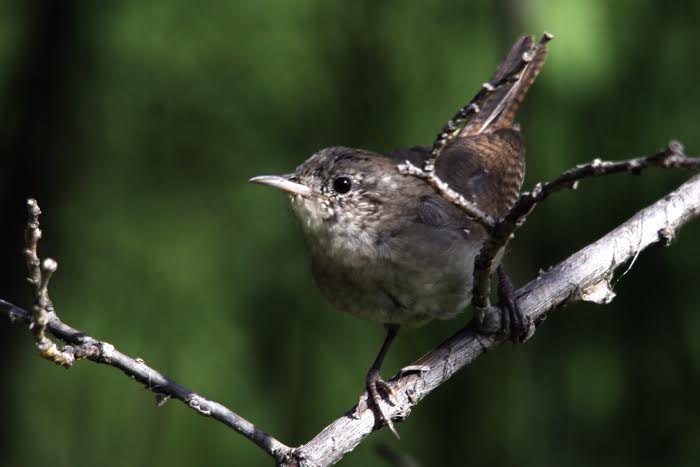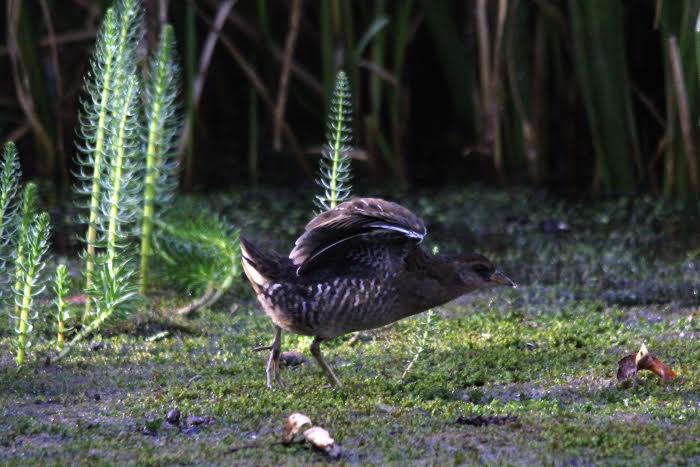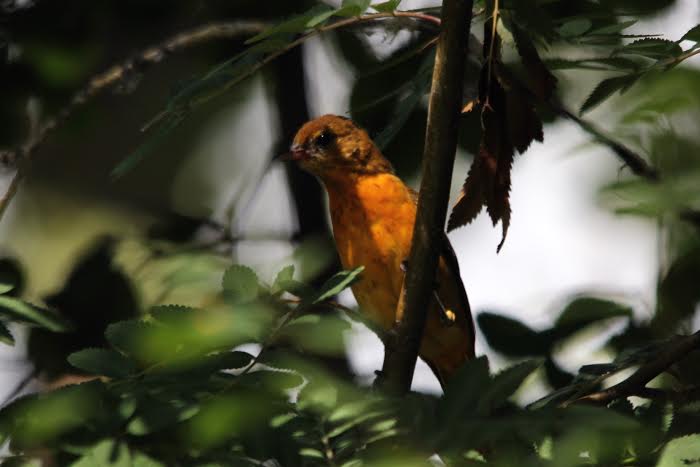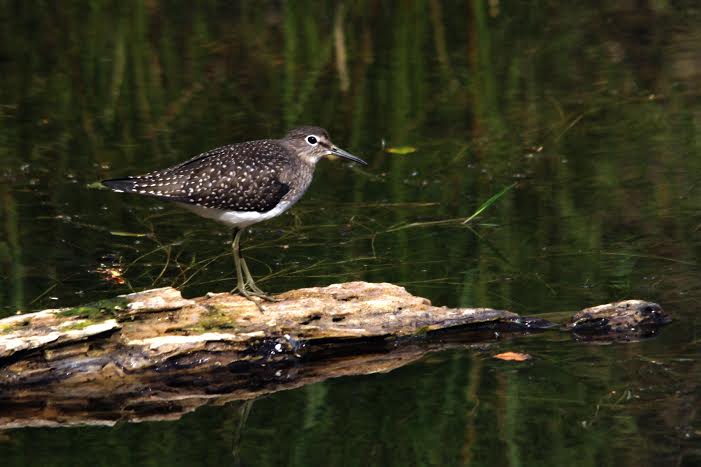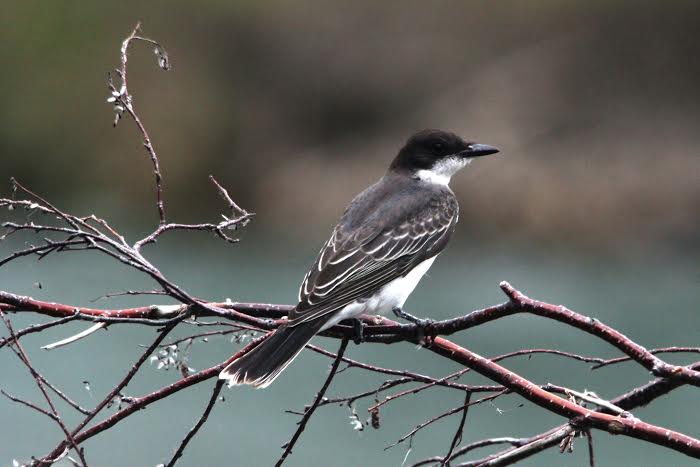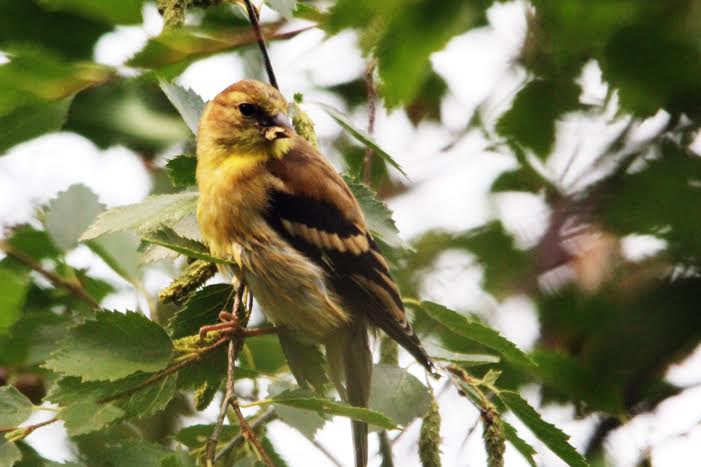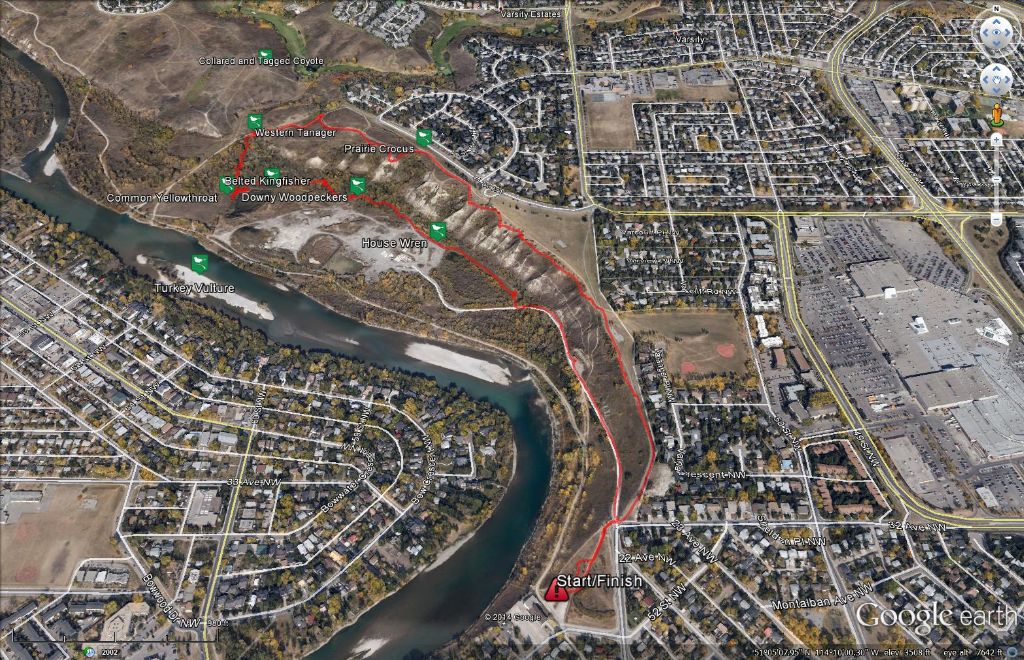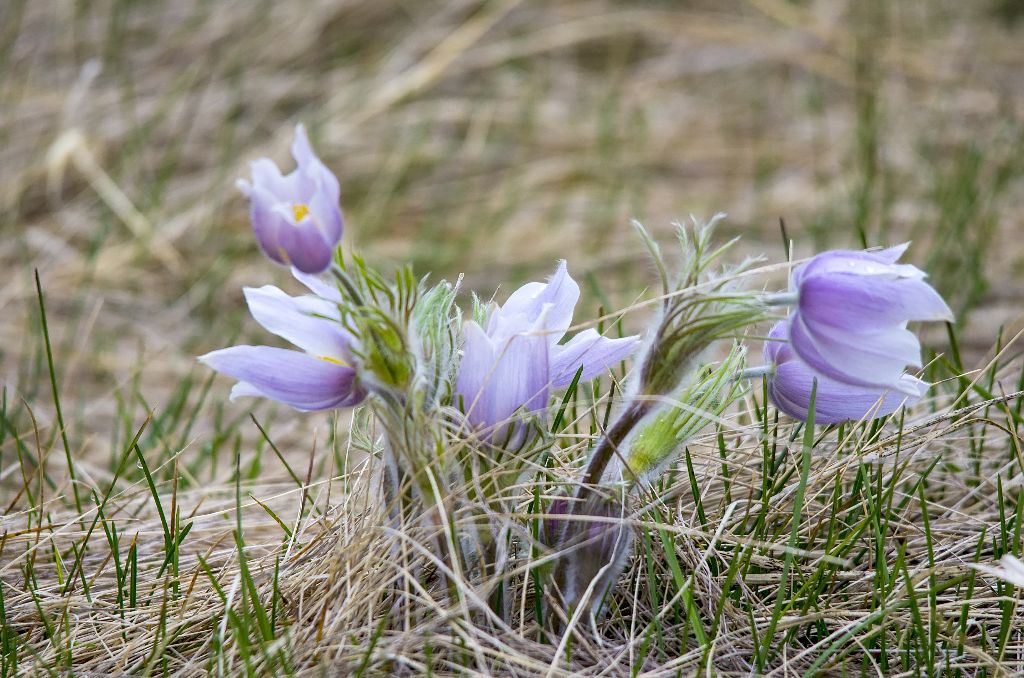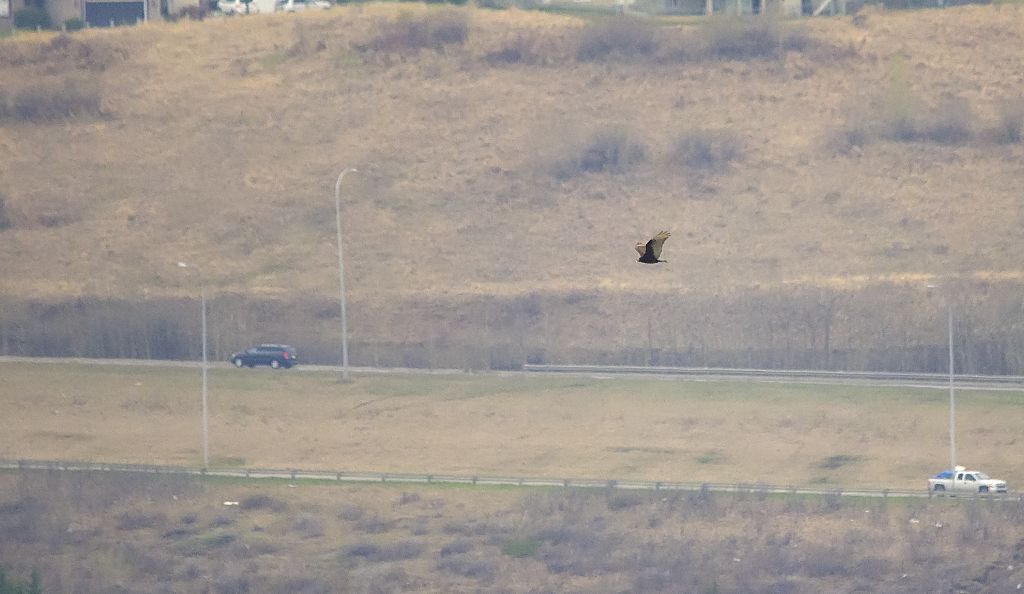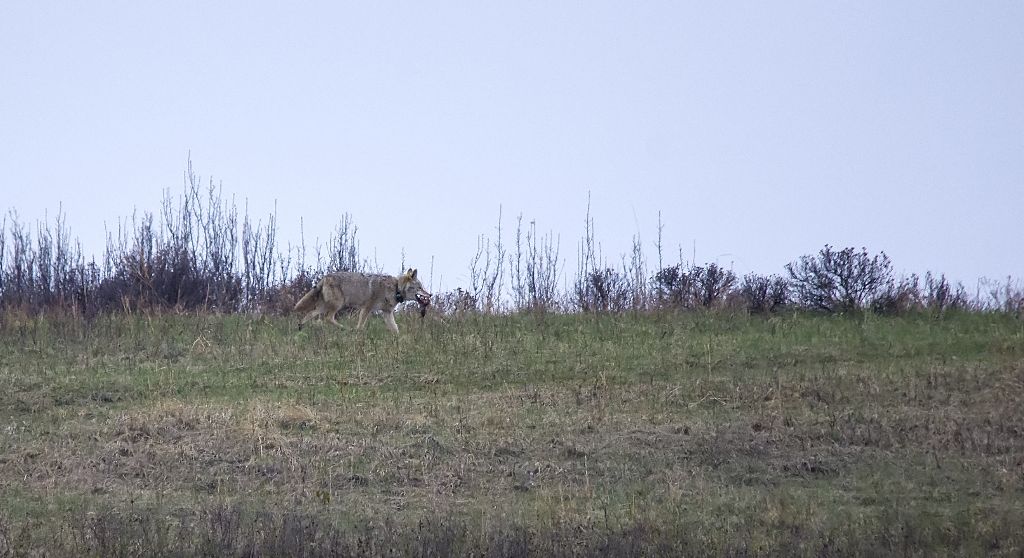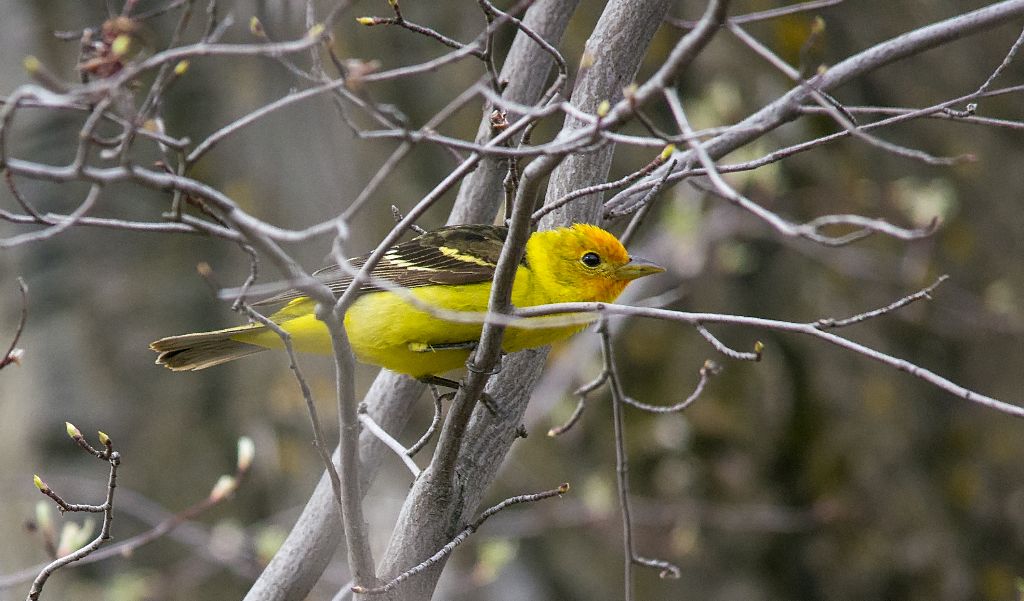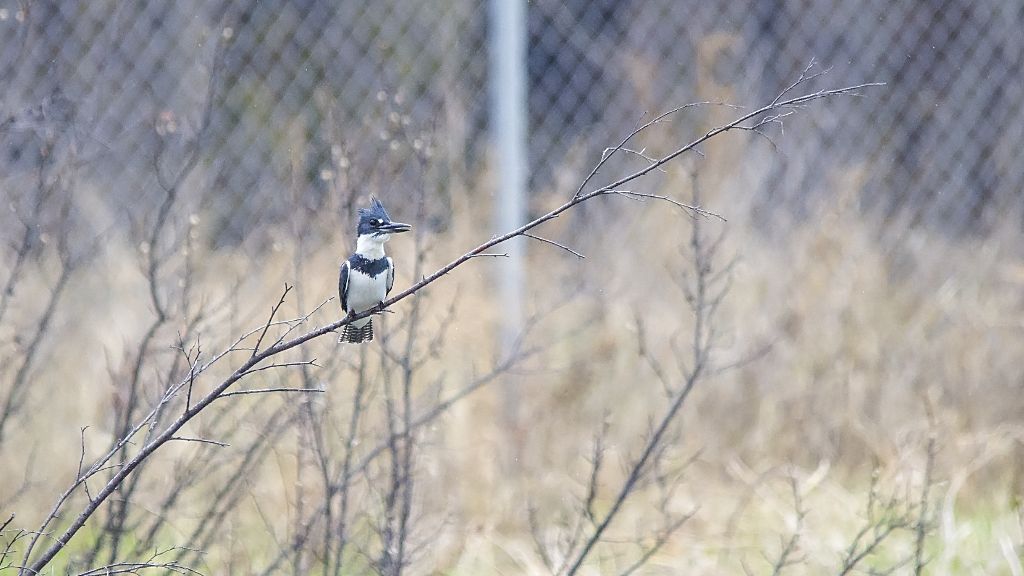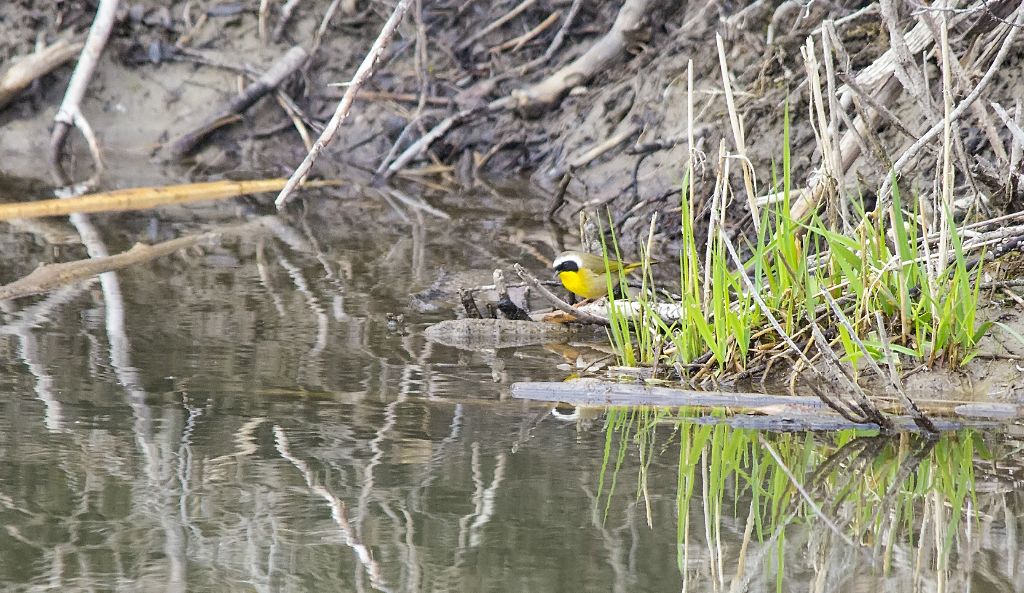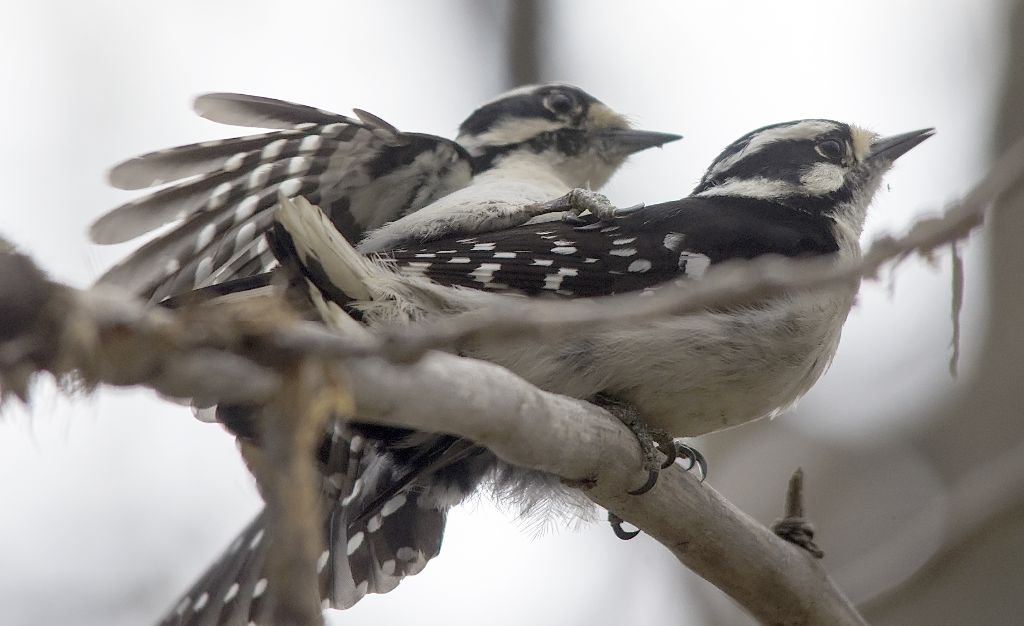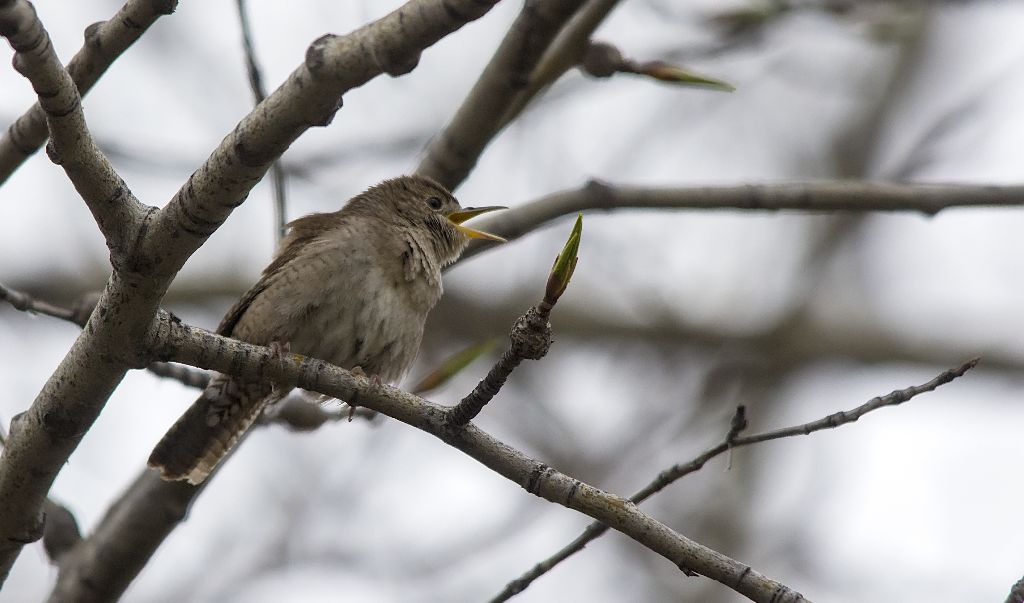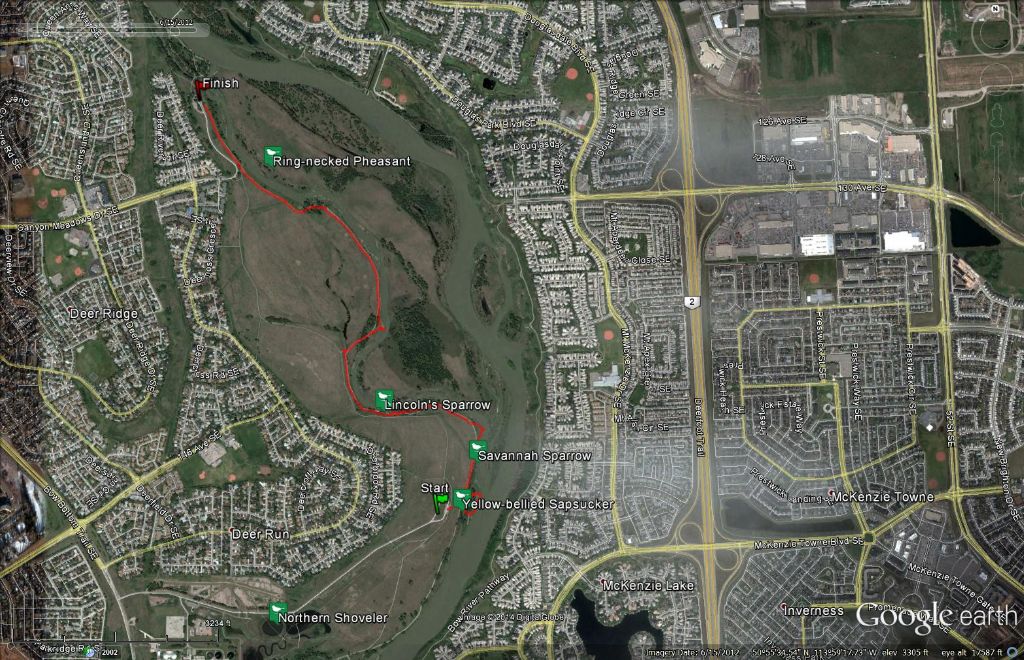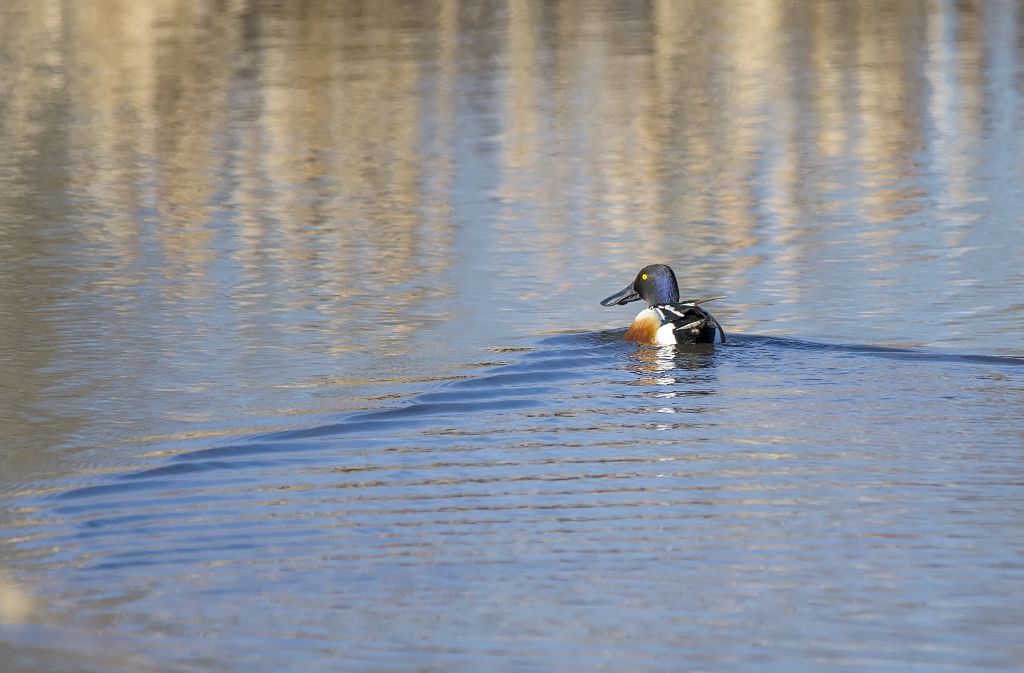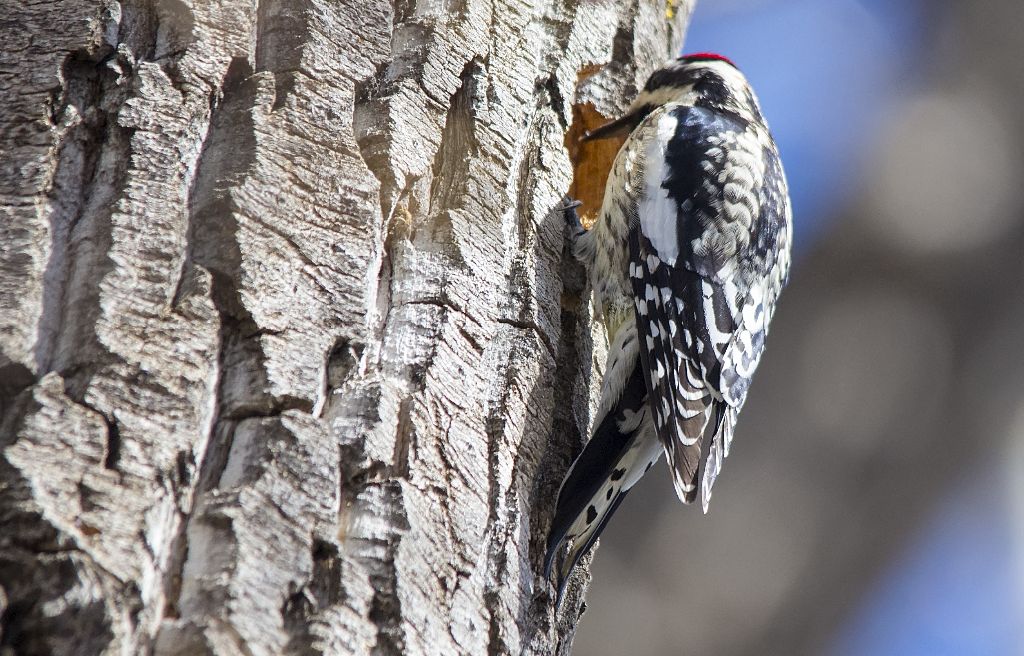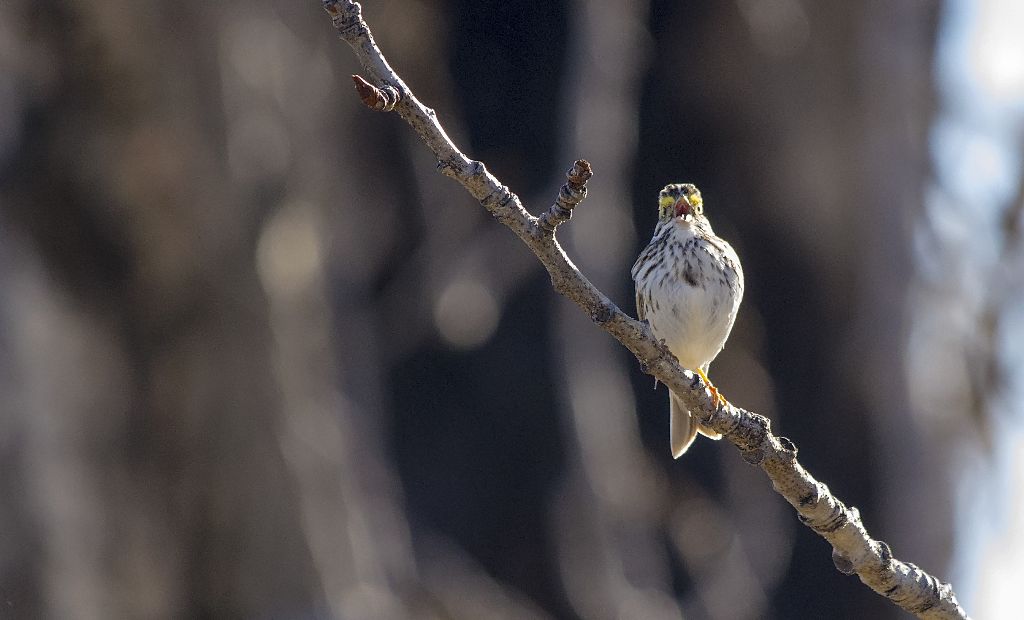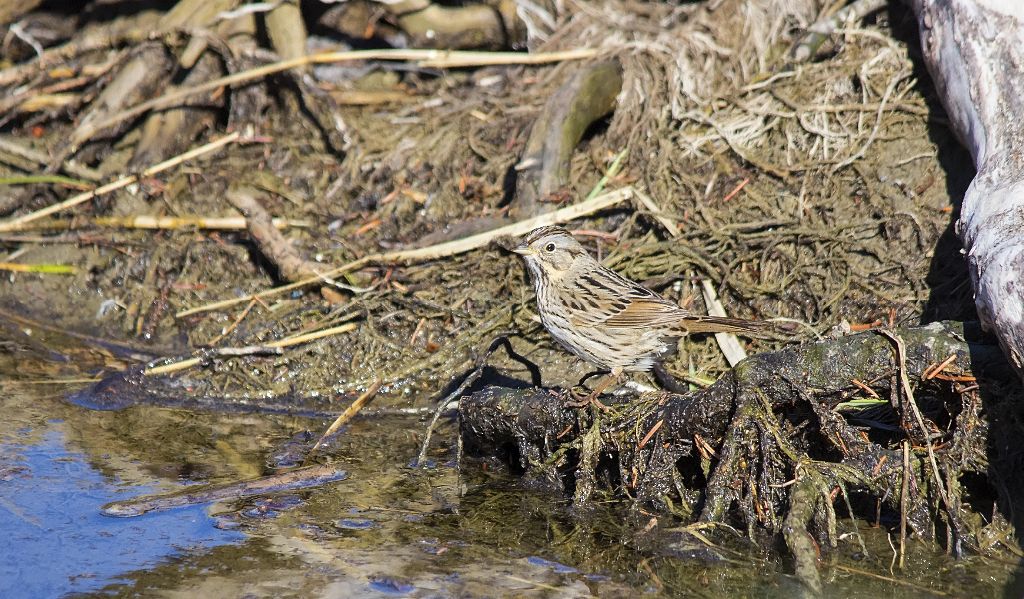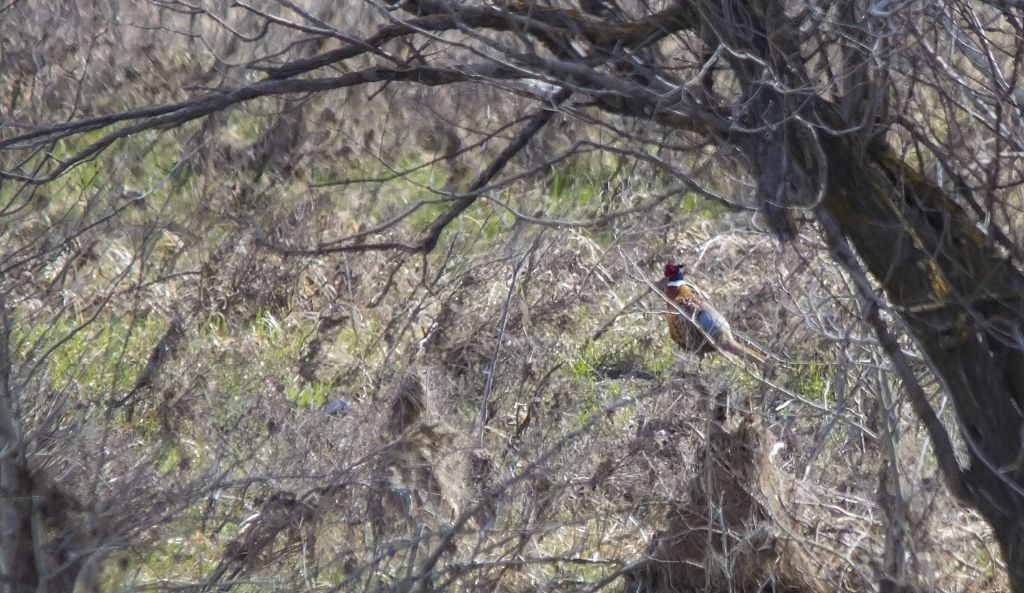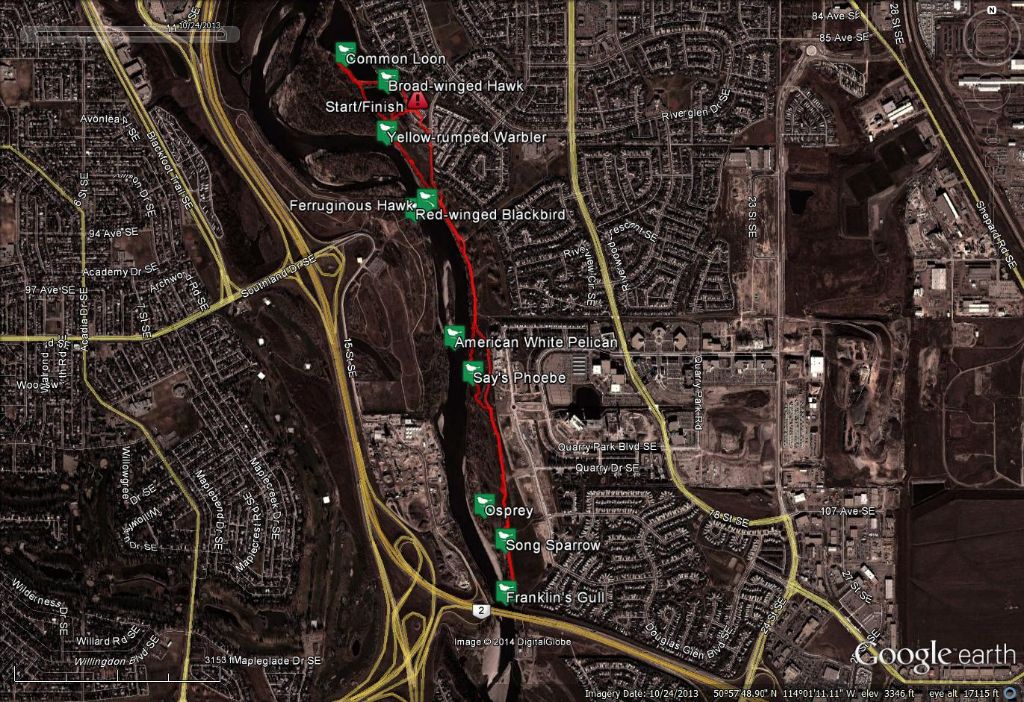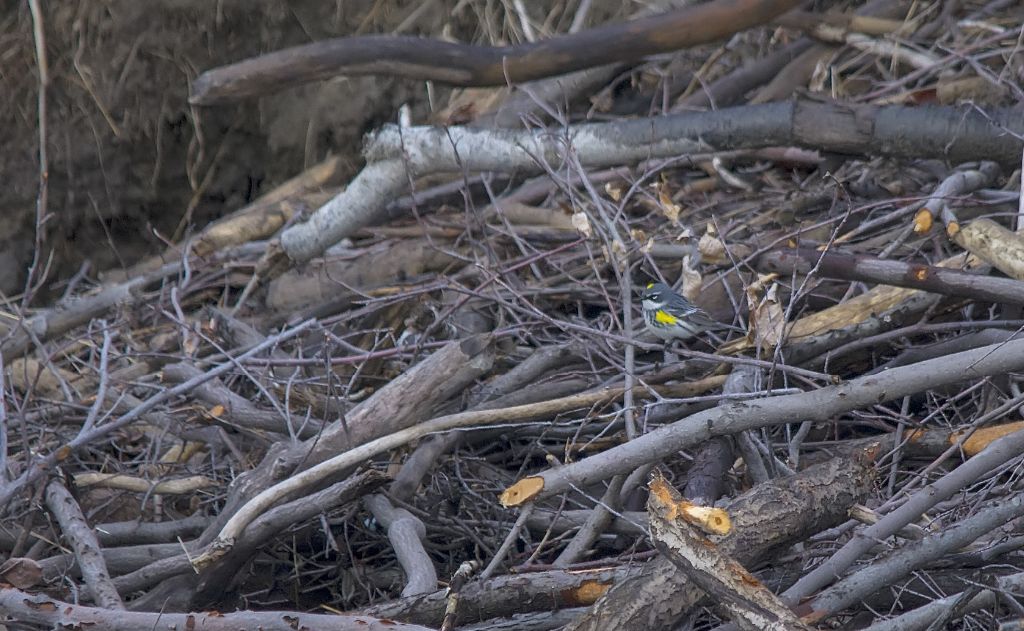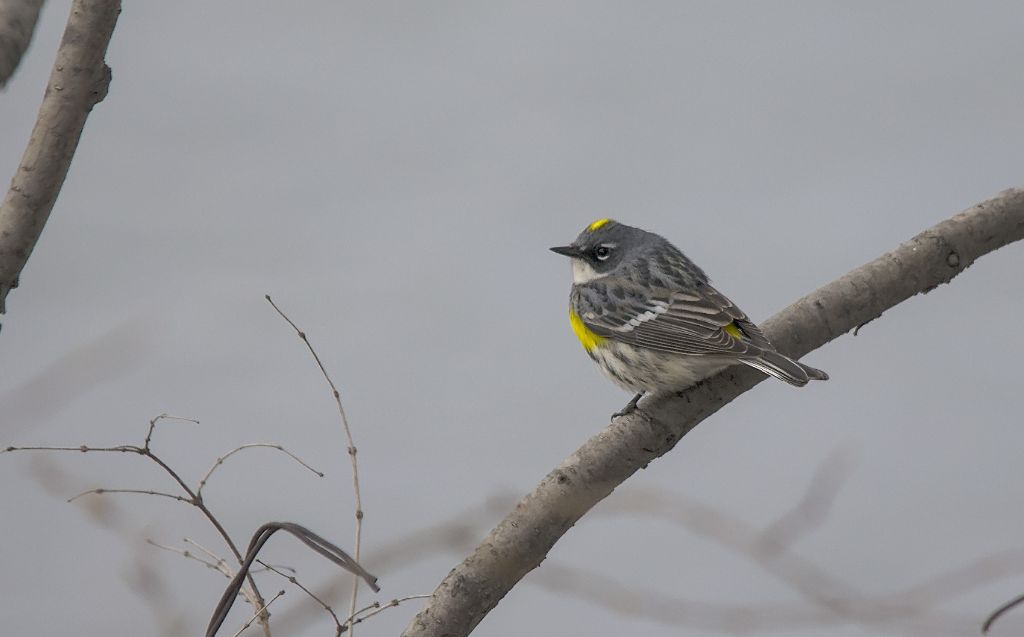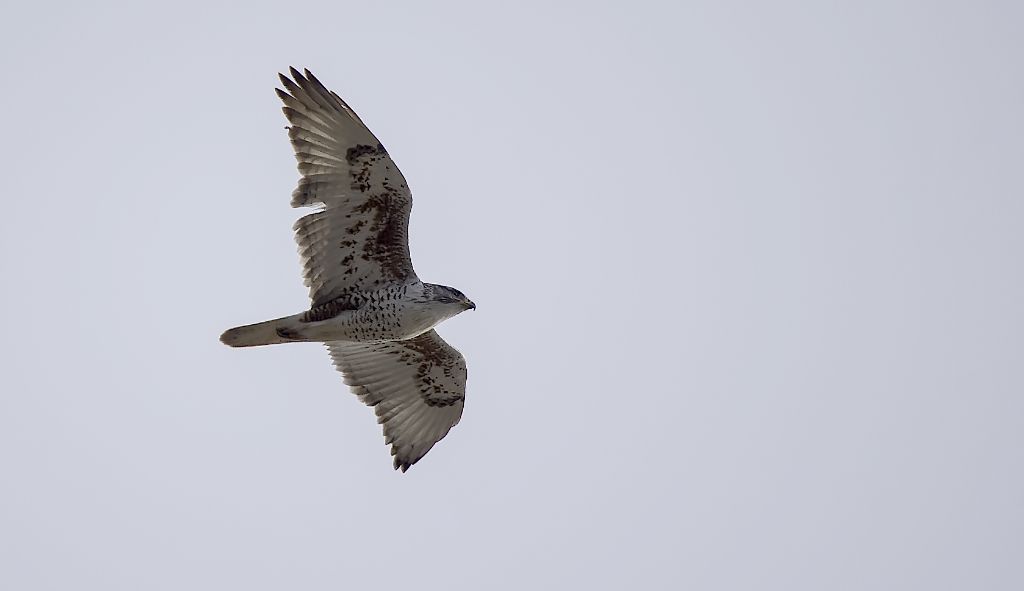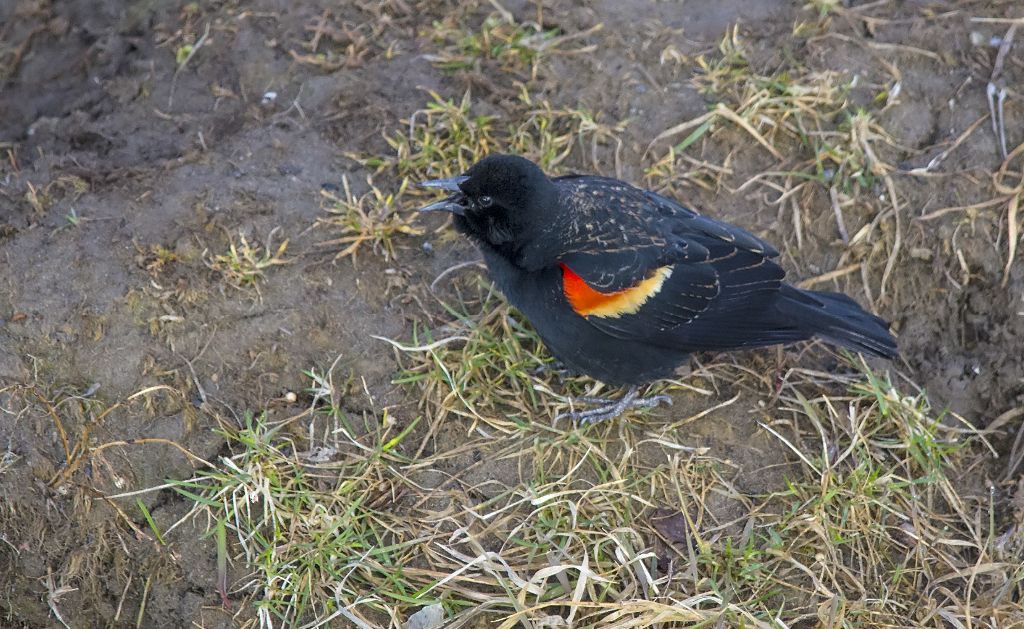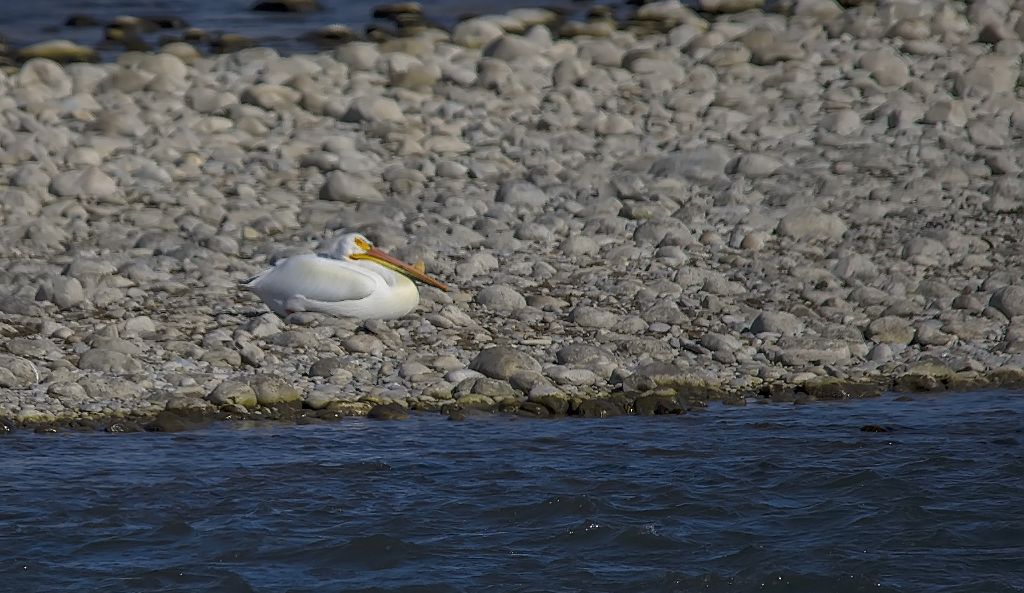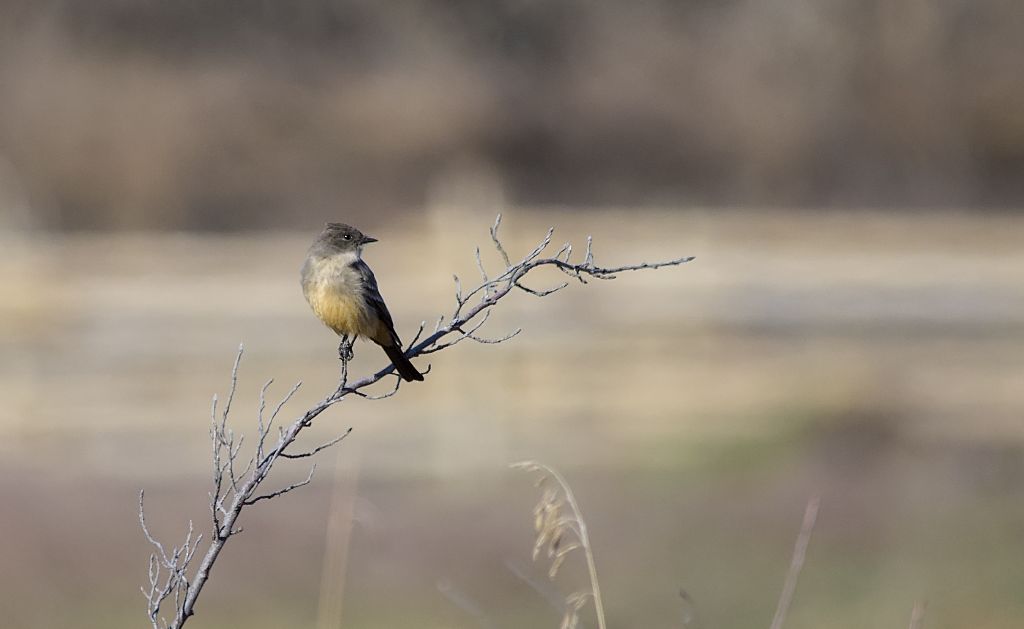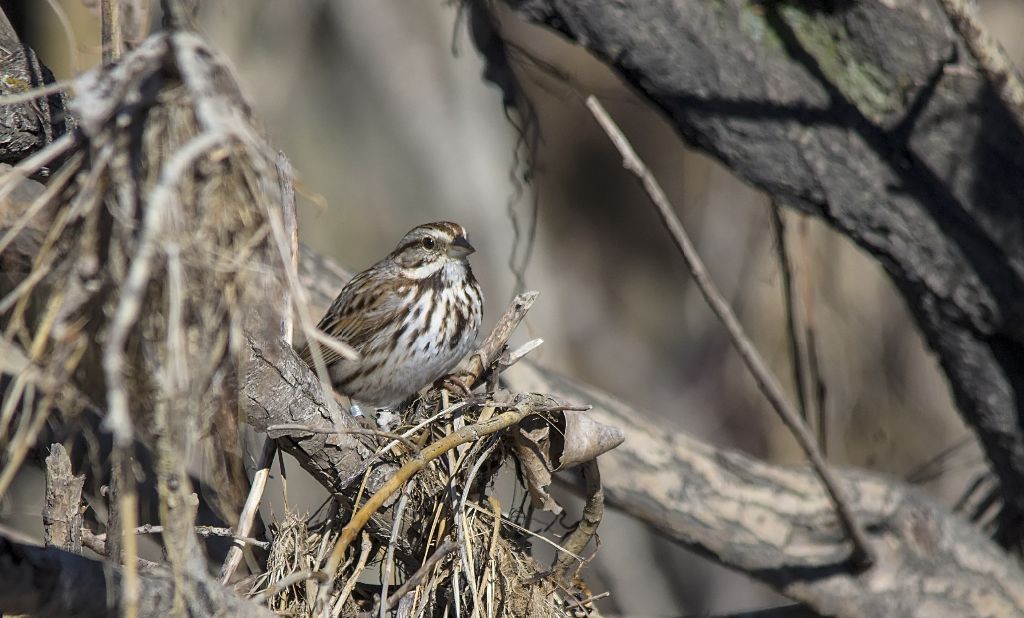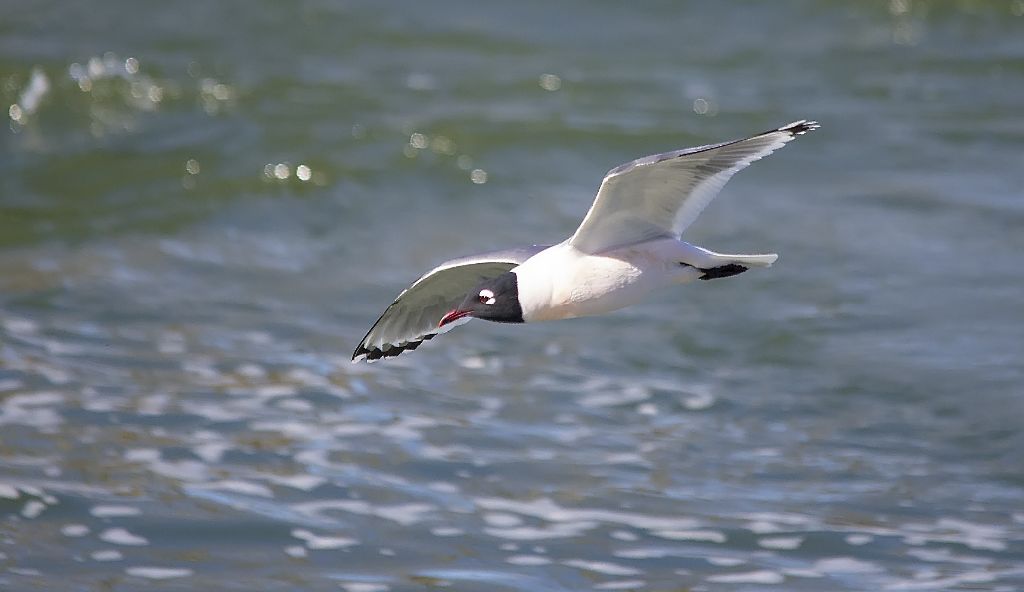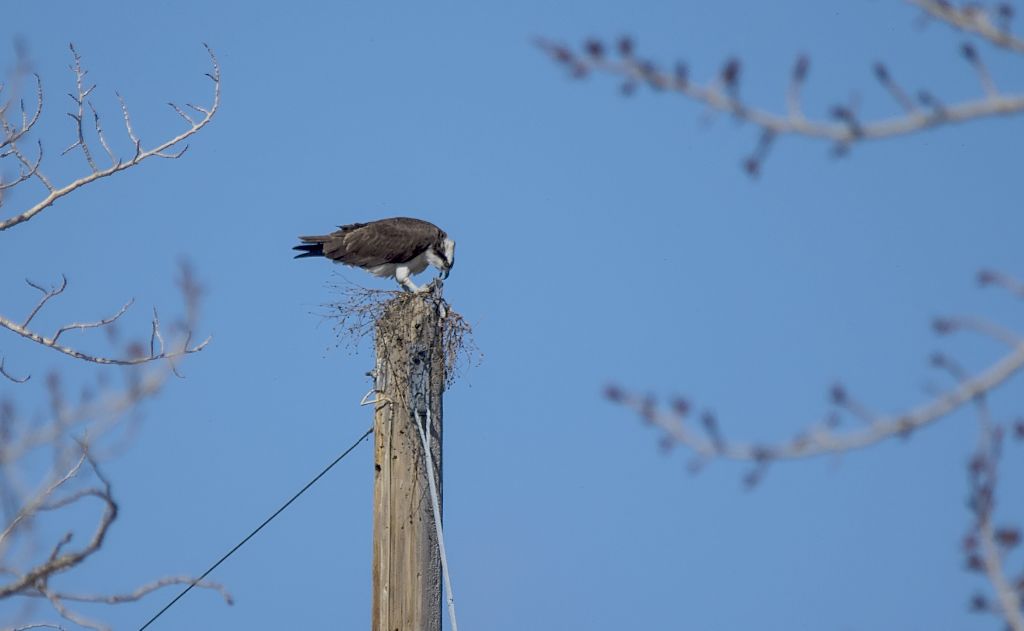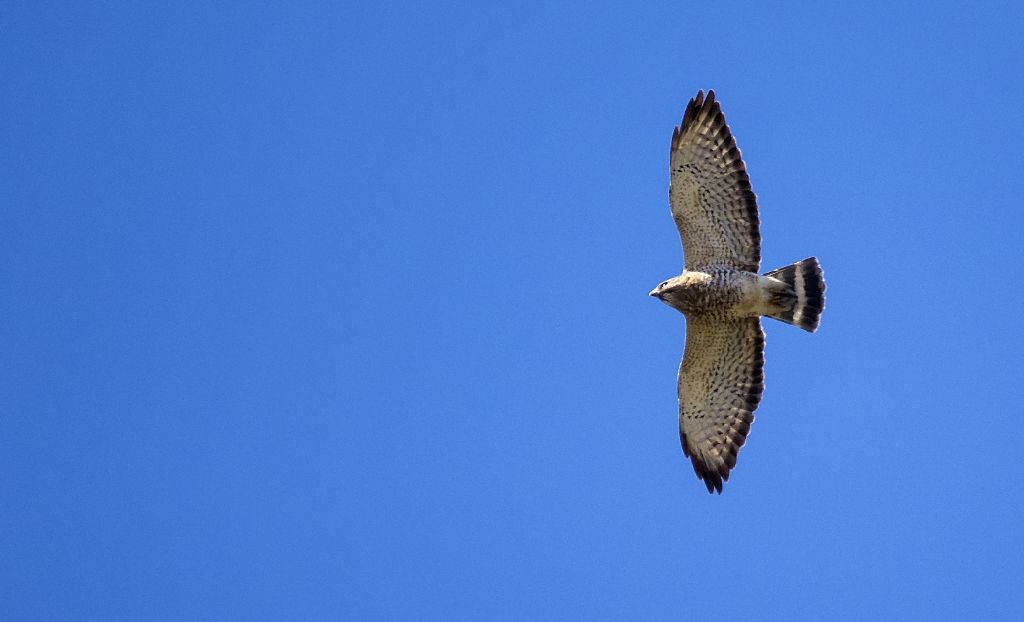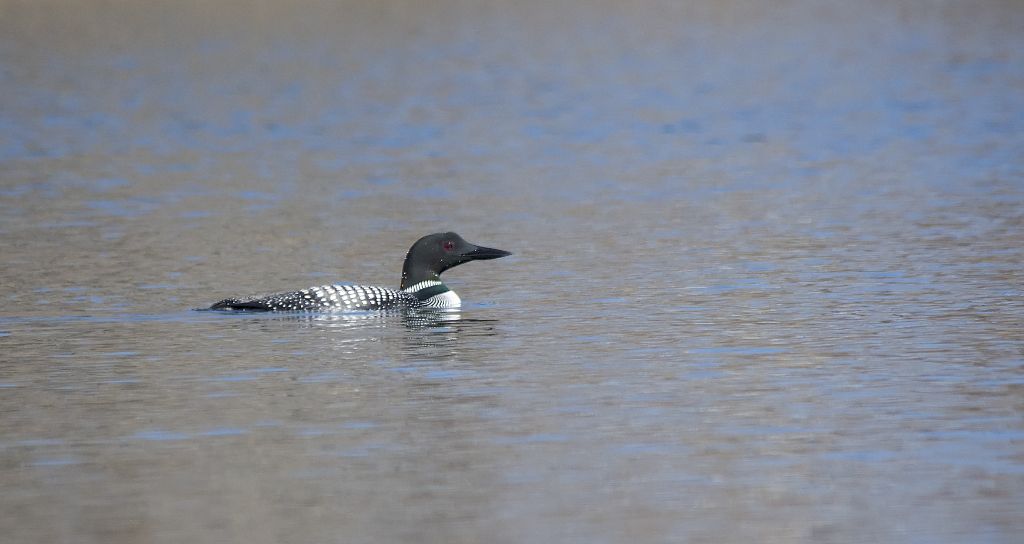Posted by Dan Arndt
Our last outing with the Friends of Fish Creek Winter birding course on March 29 was to South Glenmore Park in hopes of seeing some migrant swans, some early sparrows, and who knows what else! We did have a few good sightings, and it rounded out the course perfectly in my opinion!
It seems like not a week goes by where we haven’t been seeing at least one Northern Shrike on our walks, and soon after we started, we heard a commotion in the spruce trees above us and spotted not one, but two of them up there! One appeared to be an adult, while the second, which I was able to get a photo of, looked a little duller, which would indicate that it’s likely an immature bird.
We had a good number of Trumpeter Swans fly by us heading to the open water on the west end of the Glenmore Reservoir, but it was nice to have a pair fly by a bit closer to us, trumpeting away as they flew!
While the rest of the reservoir was still frozen over, we didn’t really get too much of a look at the birds on the far west end, so we headed up onto another parallel pathway to feed some birds, and we did also hear the beautiful song of the Golden-crowned Kinglet, the first I’d heard since January. There seemed to be far fewer of them around this year than in past years, so it was nice to see them again up close!
We also put some seeds out for the chickadees and nuthatches, and had a few Black-capped Chickadees and at least three Red-breasted Nuthatches come in to stock up their supplies.
So after a relatively quiet morning with very few birds up close to us, it was nice to almost literally stumble over this Snowshoe Hare. Unlike the one we found a few weeks earlier, this one was beginning the transition out of its winter coat and into the more typical brown summer coloration. Even still, it was still difficult for many of our group to see unless it was directly pointed out to them.
In addition to the newly arrived kinglets, swans, and gulls of the past few weeks, we also found a number of aspen budding out in their fresh catkins, better known of course as pussy willows. One of the signs of spring that’s almost as reliable as the first Red-winged Blackbirds and Red-tailed Hawks!
Our very last sighting was a trio of Blue Jays, right in the exact same spot where a few other groups had seen them earlier in the week. It’s quite possible that there’s a nest down below the ridge at this point, but with how dense the willow and aspens are in that area, it’d be nearly impossible to find it.
And with that, our winter birding course comes to an end. In fact, yesterday, April 4 was our first outing for the spring course, so get ready for migration to ramp up over the next few weeks and the colors to really start to brighten up!
Have a great week, and good birding.
